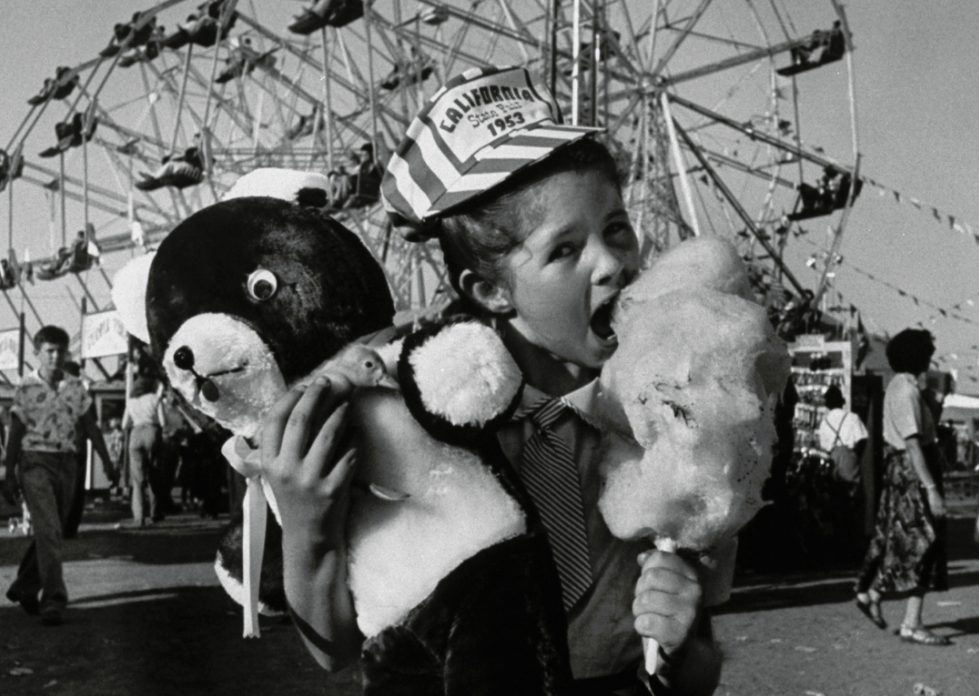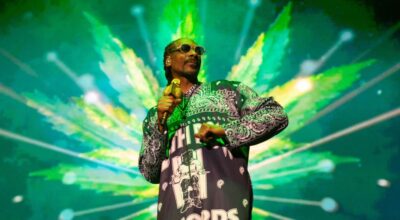Historic state and county fair photos from every state
Published 5:45 pm Wednesday, October 20, 2021
Jon Brenneis // Getty Images
Historic state and county fair photos from every state
We tend to think of fairs—with their fried food, carnival rides, and smelly livestock pens—as all-American experiences. In reality, we weren’t the first to come up with the concept; we merely adapted it from a millennia-old tradition.
The first fairs, or “feriae,” were put on by Ancient Romans. Typically surrounding their holy days, these events included games, competitions, feasts, and other festivities. By the time they made their way to the United States thousands of years later, fairs had shed their association with religion and shifted their focus to promoting agriculture and home skills, instead.
While the focus of many county and state fairs is still agricultural, the events have continued to evolve and today feel more like carnivals than the educational experience they once were.
Stacker curated a selection of historical state and county fair photos from every state. Using local and government archives, we’ve selected images that demonstrate the development of our country’s fairs from lecture circuits to amusement events. Keep reading to see what your state fair looked like in the days of yore.
You may also like: What marriage was like the year you were born
![]()
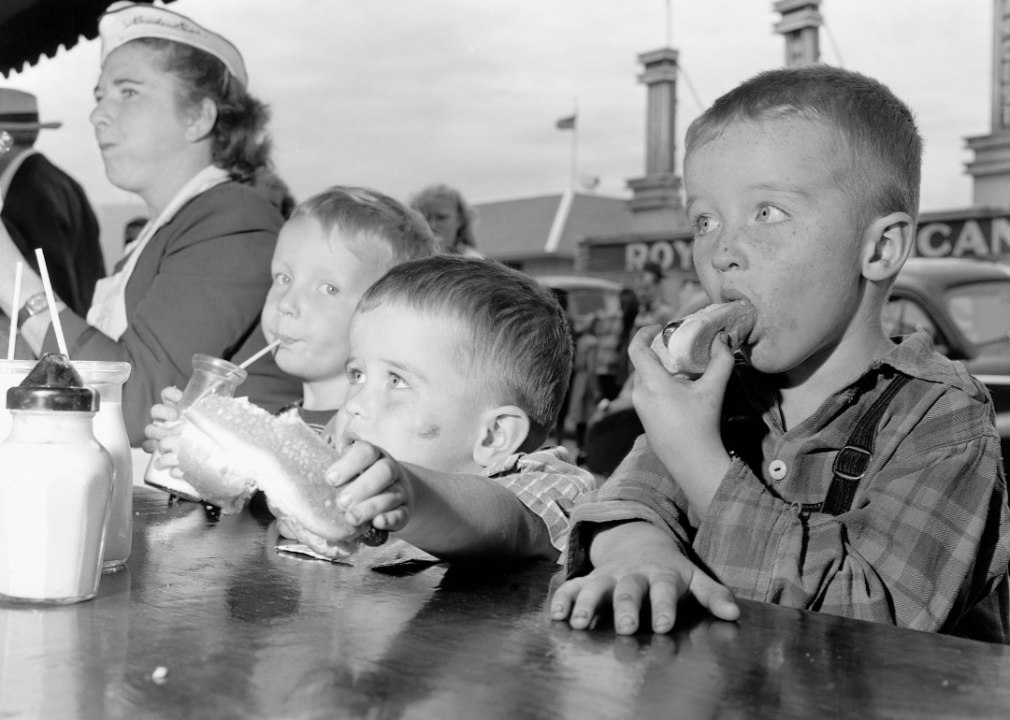
Corbis via Getty Images
Alabama
Alabama held its first state fair back in 1855. Among the fair’s activities at the time were a plowing contest, horse races, hot air balloons. Today, the Alabama State Fair features everything from aquatic acrobatics and motorcycle stunts to circus acts and magic shows.
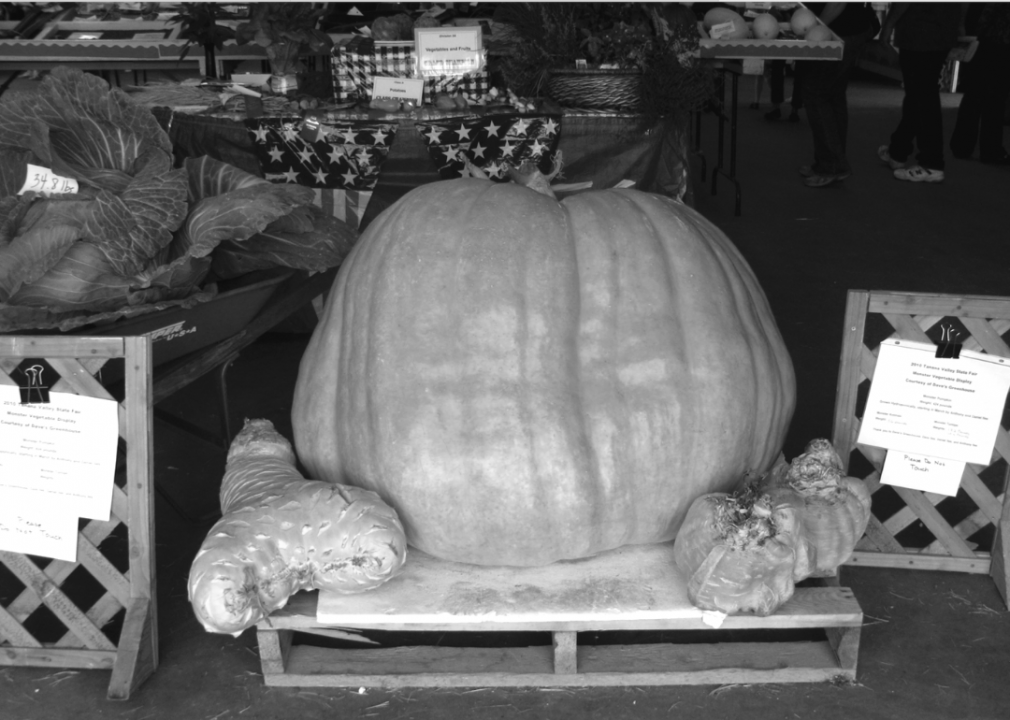
Liz // Wikimedia Commons
Alaska
The tradition of growing giant cabbages for the Alaska State Fair goes back to 1941 when a $25 prize (almost $400 in today’s dollars) was offered for the largest leafy vegetable. In 2012, two years after this photo was taken, Scott Robb set a world record for the heaviest cabbage with a 138.25-pound entry.
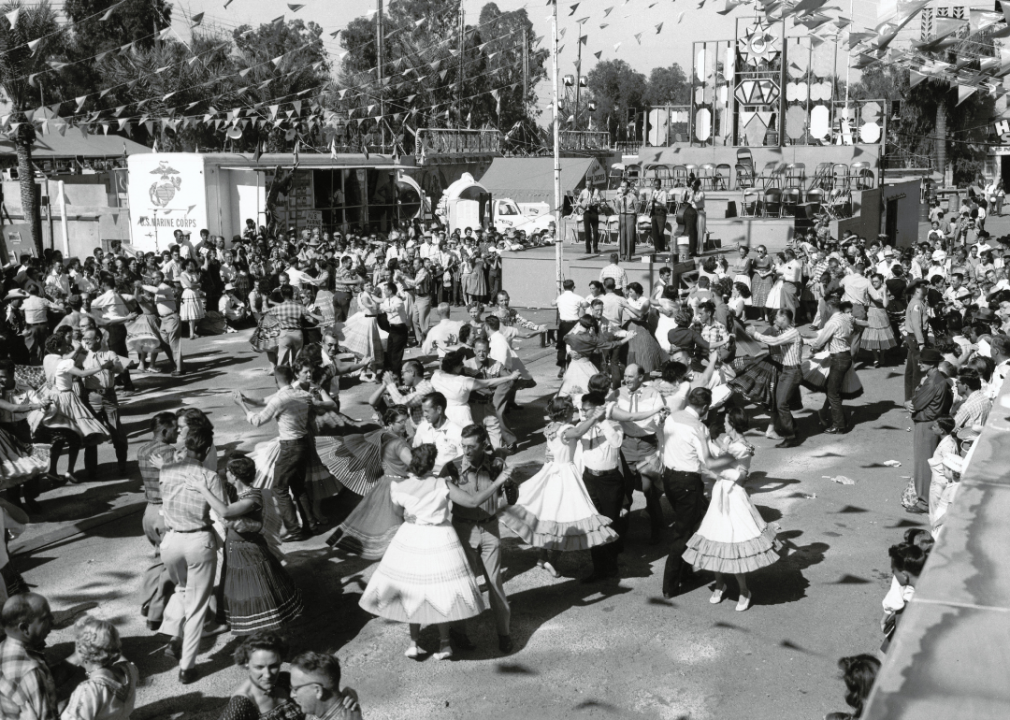
PhotoQuest // Getty Images
Arizona
In the 1950s, Arizona state fair officials began inviting bands and musical acts to play at the annual event. Performers over the years included big names like Elvis Presley and Patsy Cline. Here, folks square dance during the 1959 fair in Phoenix.
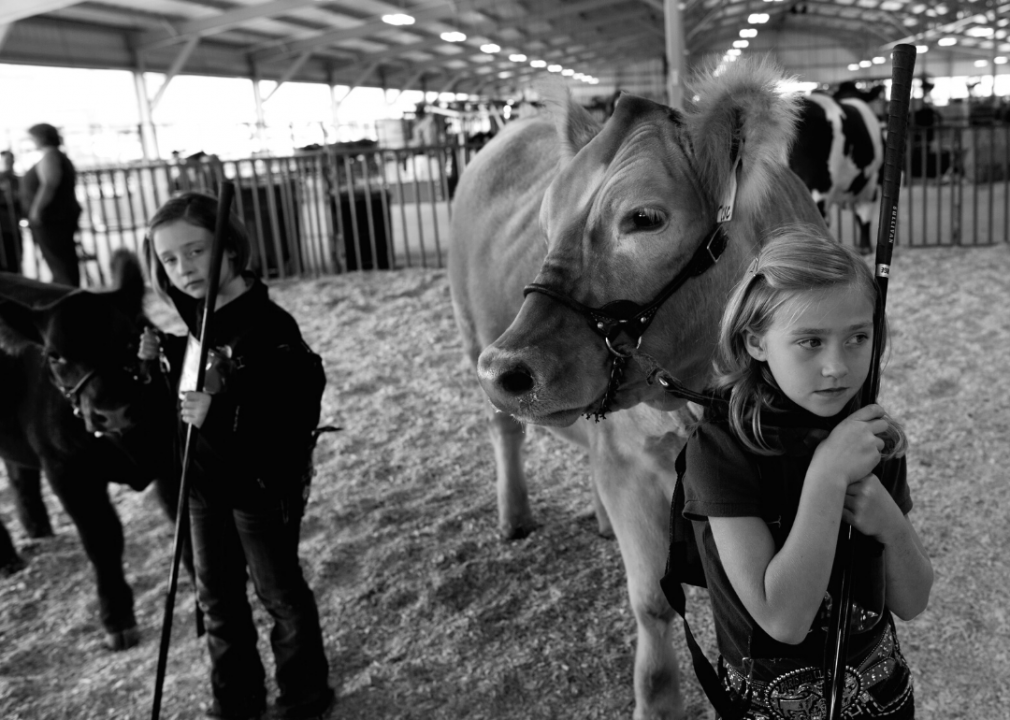
Lynsey Addario/Getty Images Reportage
Arkansas
Like many others, the Arkansas State Fair started as a livestock show back in 1938 as a way to promote the industry, which was just beginning to flourish. That tradition of showing farm animals remains in place to this day, as demonstrated by this young lady and her cow at the 2011 fair.
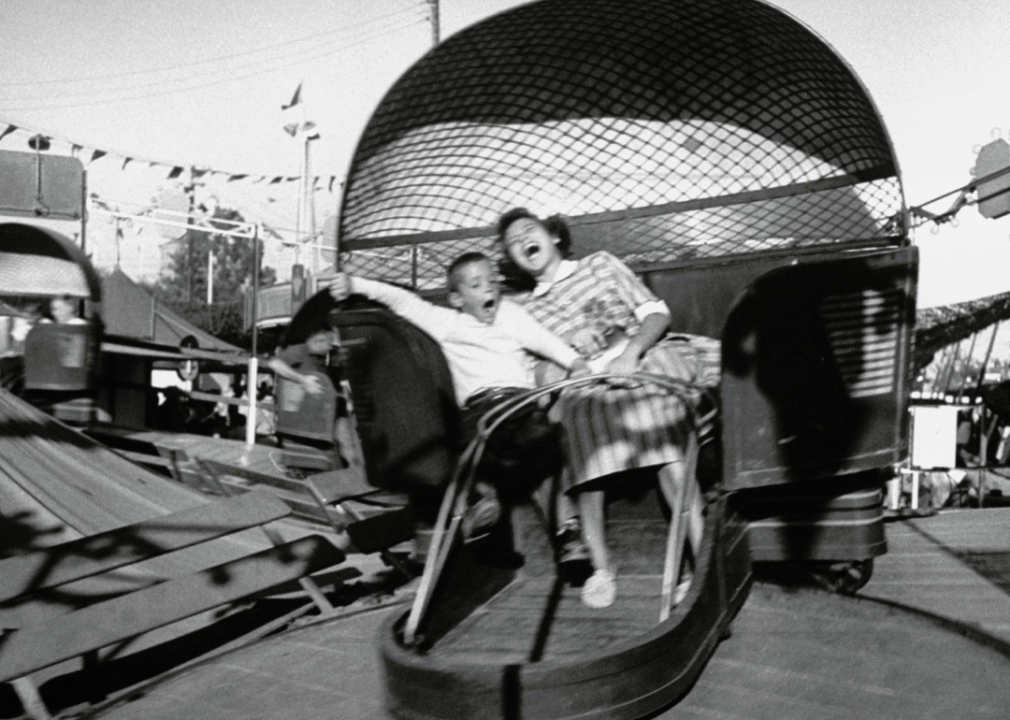
Jon Brenneis // Getty Images
California
Not content with hosting an ordinary state fair, California installed a permanent monorail on its Sacramento fairgrounds to help move attendees around the 350-acre property. The Walt Disney-inspired system isn’t the only thrilling attraction attendees can enjoy—the midway has also been packed with fantastically fun carnival rides, like the one these children enjoyed in the 1950s.
You may also like: Popular fashion trends the year you were born
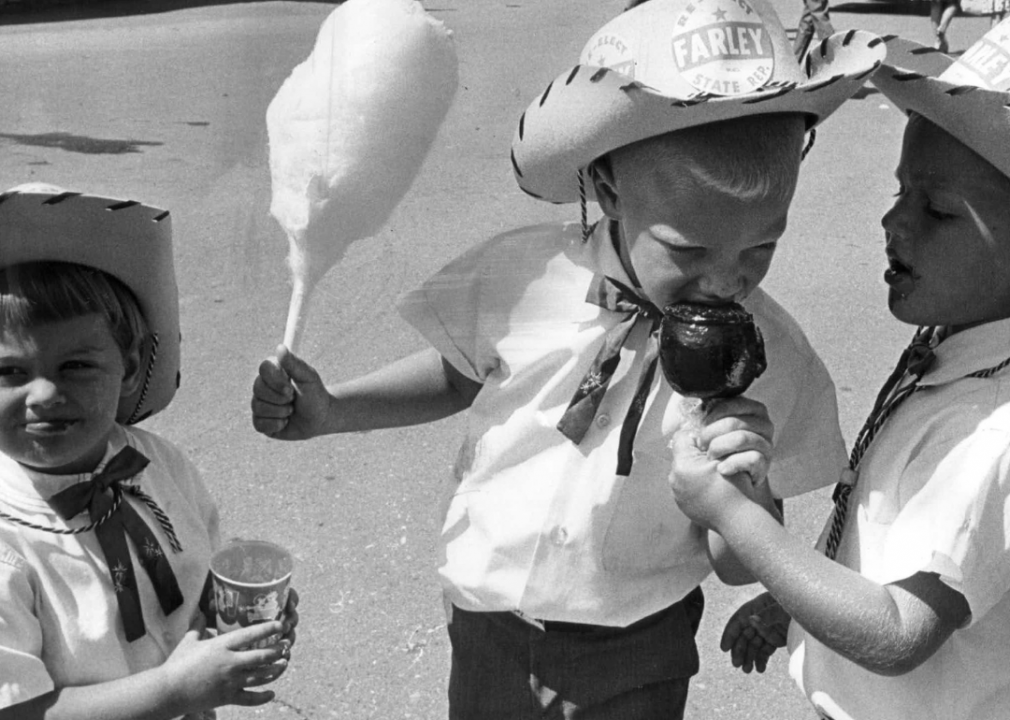
Ed Maker/The Denver Post via Getty Images
Colorado
One of the best parts of any state fair is the cuisine. Here, three youngsters enjoy cotton candy, cola, and a candied apple at the 1966 fair in Pueblo, Colorado. Today, deep-fried Pueblo chiles rank among the most popular fair foods in the state.
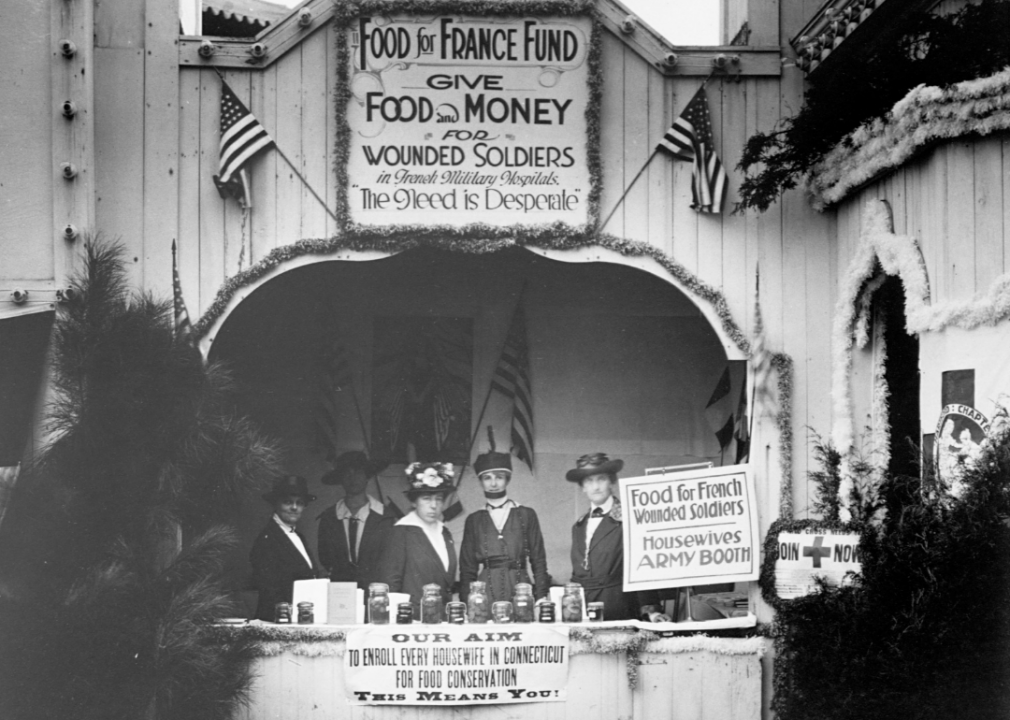
CORBIS/Corbis via Getty Images
Connecticut
American housewives during World War I were asked to sign cards pledging to conserve and preserve food as part of the war effort to mitigate nationwide food shortages. This booth at the 1917 Connecticut State Fair sought to collect signed food-conservation cards from women attendees.
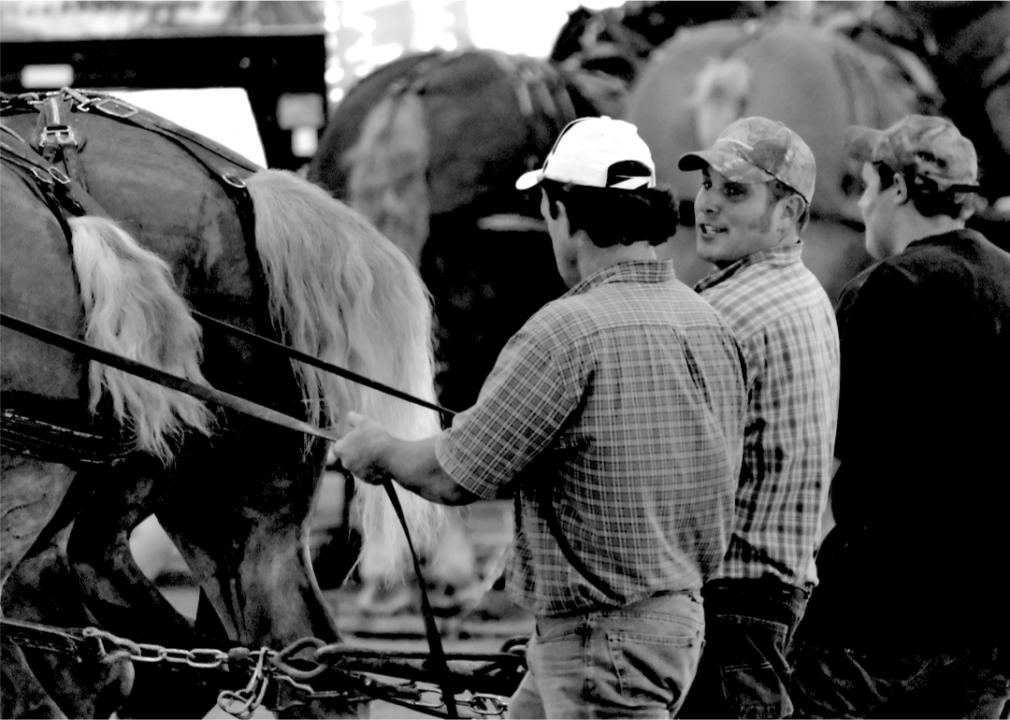
Herbert Quick // Shutterstock
Delaware
Many state fairs still feature horse-pulling competitions, in which pairs of horses are tied to stone boats or weighted sleds as handlers compete to see which teams can pull the most weight over a short distance. Here, three men lead draft horses across the arena after a pulling competition at the state fair in Harrington, Delaware, in 2015.
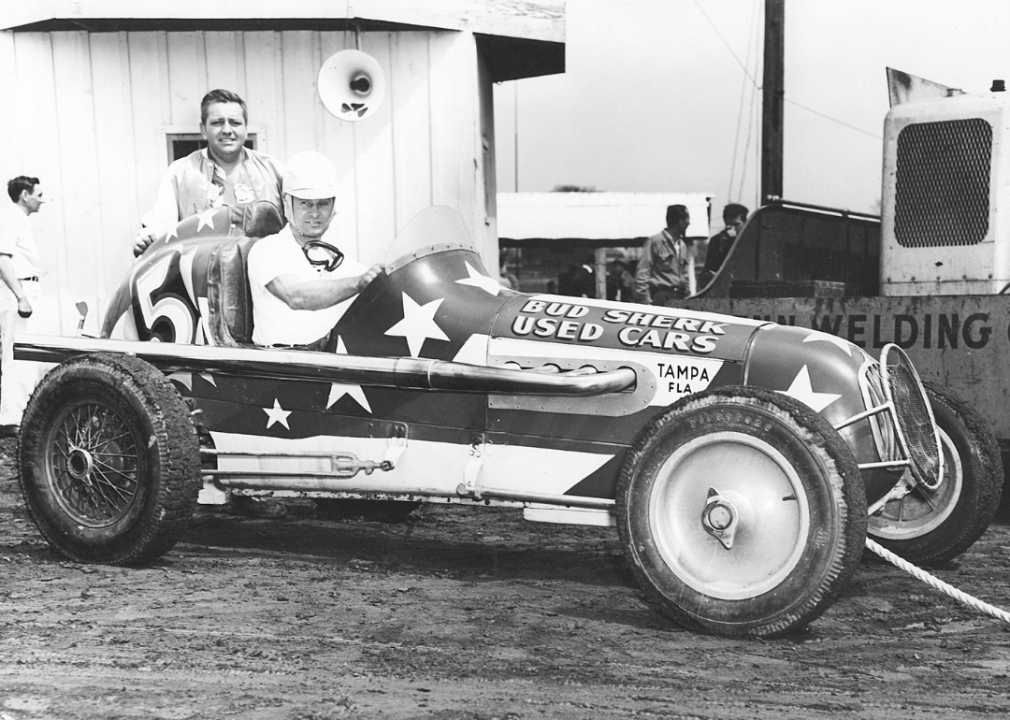
ISC Images & Archives via Getty Images
Florida
In conjunction with the Florida State Fair, local businesses often sponsored drivers during the International Motor Contest Association Winternationals held each February. Here, a driver gets set for an IMCA Sprint Car race during the state fair in 1952 with his sponsor’s name emblazoned across the hood of the car.
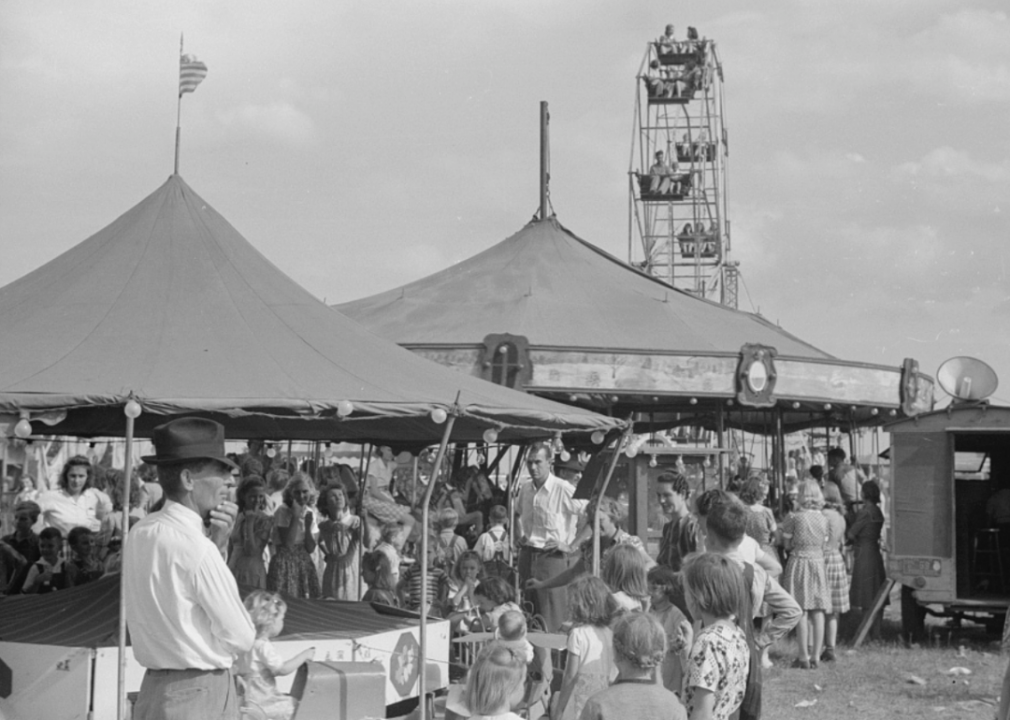
Jack Delano // Library of Congress
Georgia
State fairs, like many other aspects of American life, were segregated well into the mid-20th century. In 1941, the Greene County Fair in Greensboro, Georgia, admitted white schoolchildren for free one day, then Black children for free the next.
You may also like: How Halloween has changed in the past 100 years
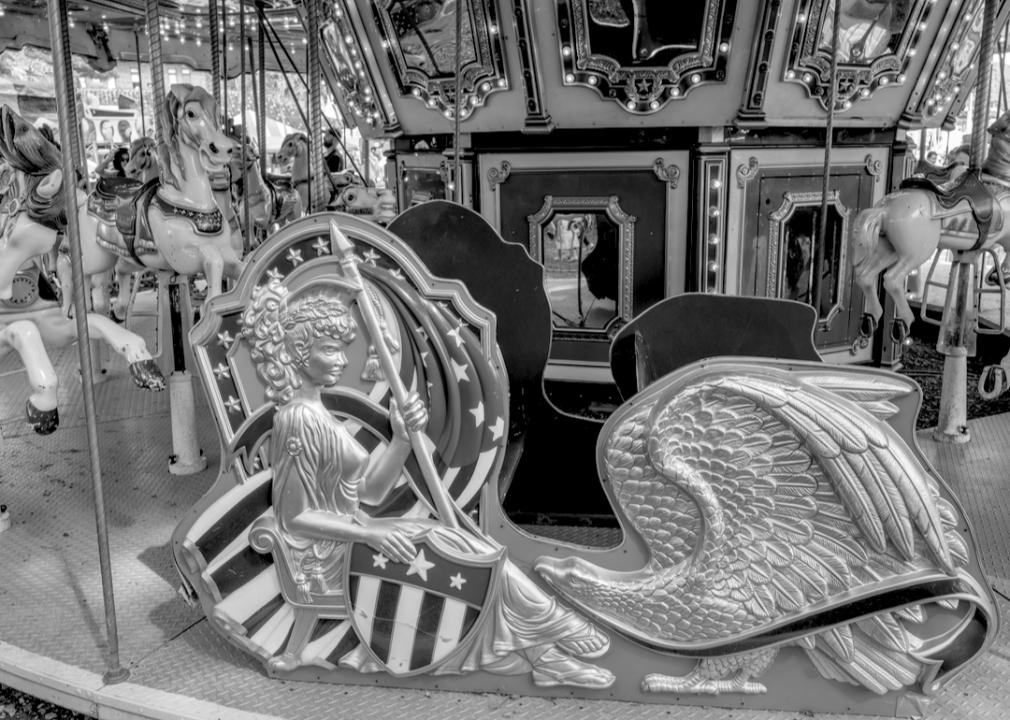
Theodore Trimmer // Shutterstock
Hawaii
For more than a decade, Hawaii’s state fair was known as “The 49th State Fair” in anticipation of the island nation joining the United States. When Alaska beat Hawaii to the distinction by eight months in 1959, the latter renamed its event “The 50th State Fair.”
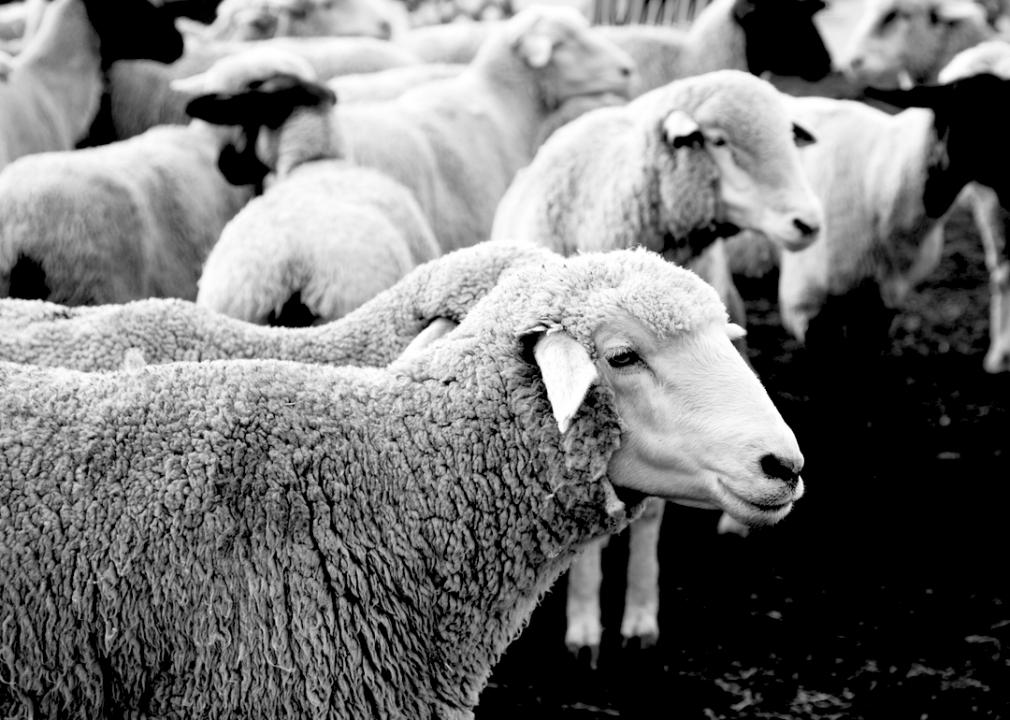
Tami Freed // Shutterstock
Idaho
From the earliest days of the Idaho State Fair, cowboy contests—like steer roping and bronco riding—have been major components of the festivities. In this photo, taken at the North Idaho State Fair, a group of sheep await the mutton-busting event, during which children rode and raced them.
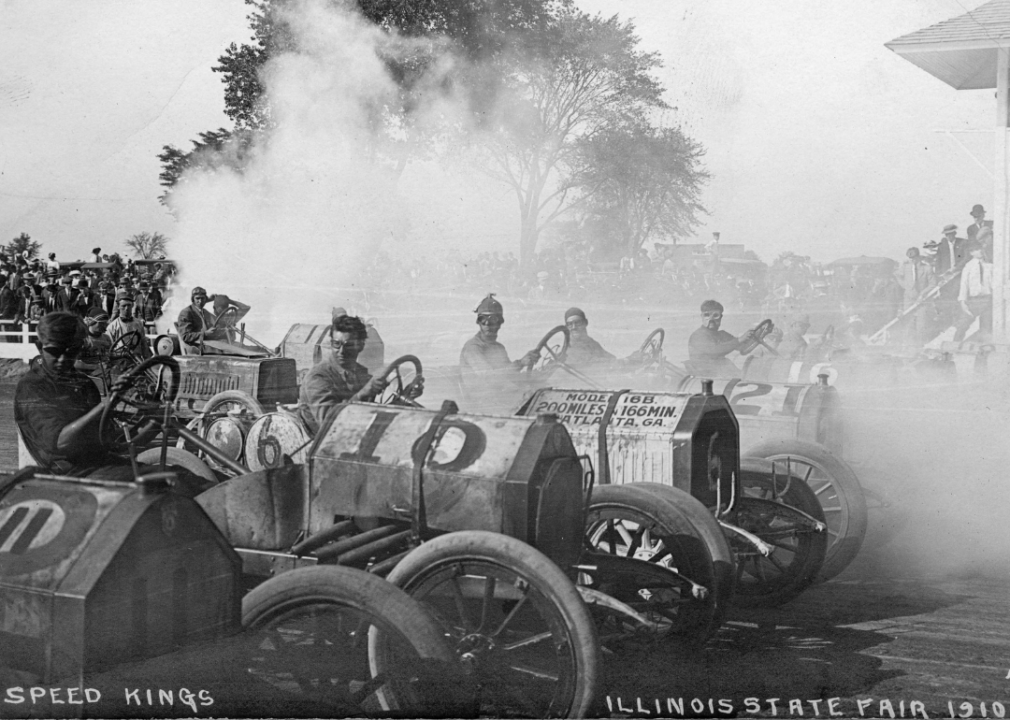
Transcendental Graphics // Getty Images
Illinois
As the automobile gained popularity in the early 1900s, Illinois added a one-mile race track to the fairgrounds. This picture offers a view of racers at the starting line of the automobile race at the Illinois State Fair in 1910.
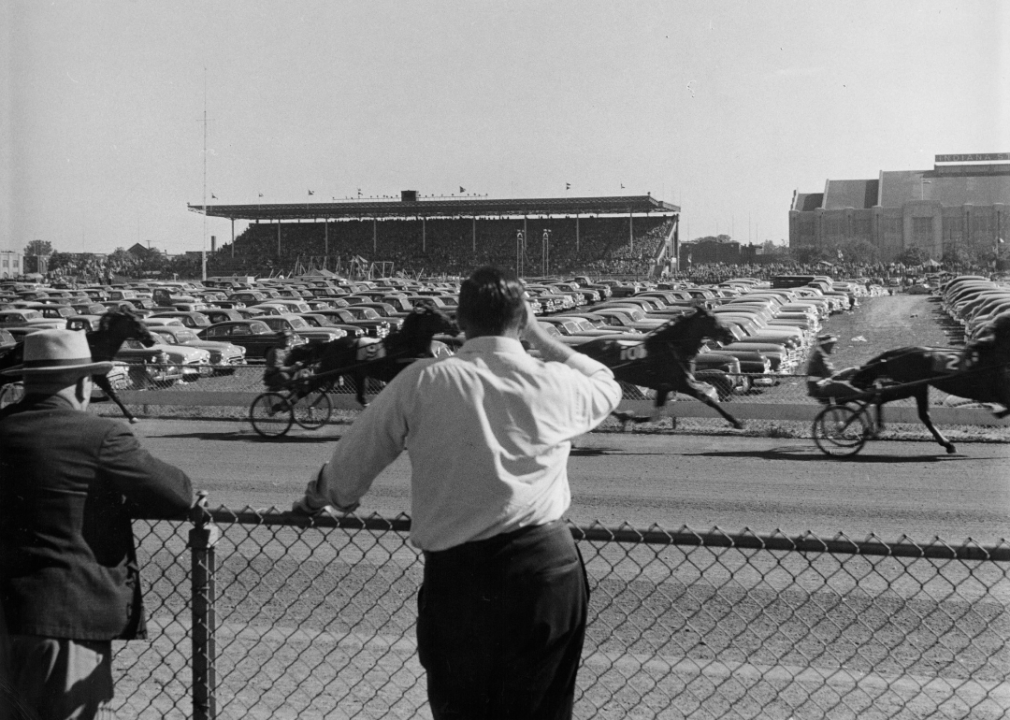
Lawrence Thornton/Archive Photos // Getty Images
Indiana
The first 40 Indiana State Fairs were held at a different location each year until the Indiana State Fairgrounds and Event Center opened in 1892. Harness racing, as seen above at the Indiana State Fair in 1950, was a popular event at many fetes.
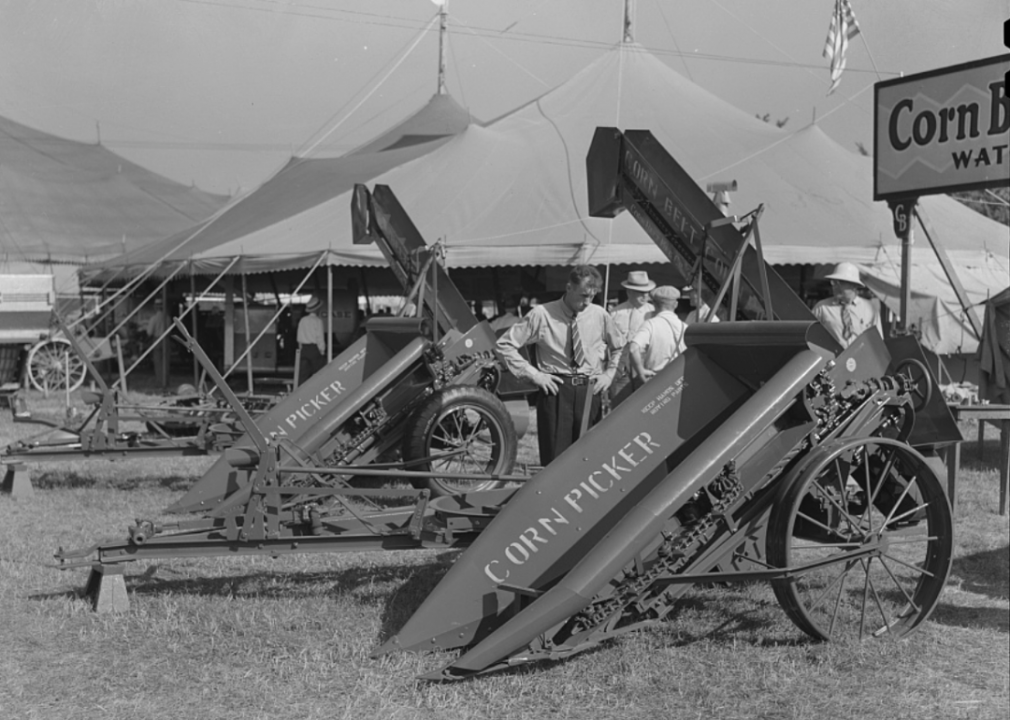
Arthur Rothstein // Library of Congress
Iowa
When Iowans first began tinkering with the idea of hosting a state fair in the 1850s, the intention was to create an educational event for farmers. While the fair has moved well beyond lengthy lectures and classes, the exhibition of new and groundbreaking farm equipment, like these corn pickers at the 1939 fair, remains a staple.
You may also like: 50 ways America is projected to change by 2050
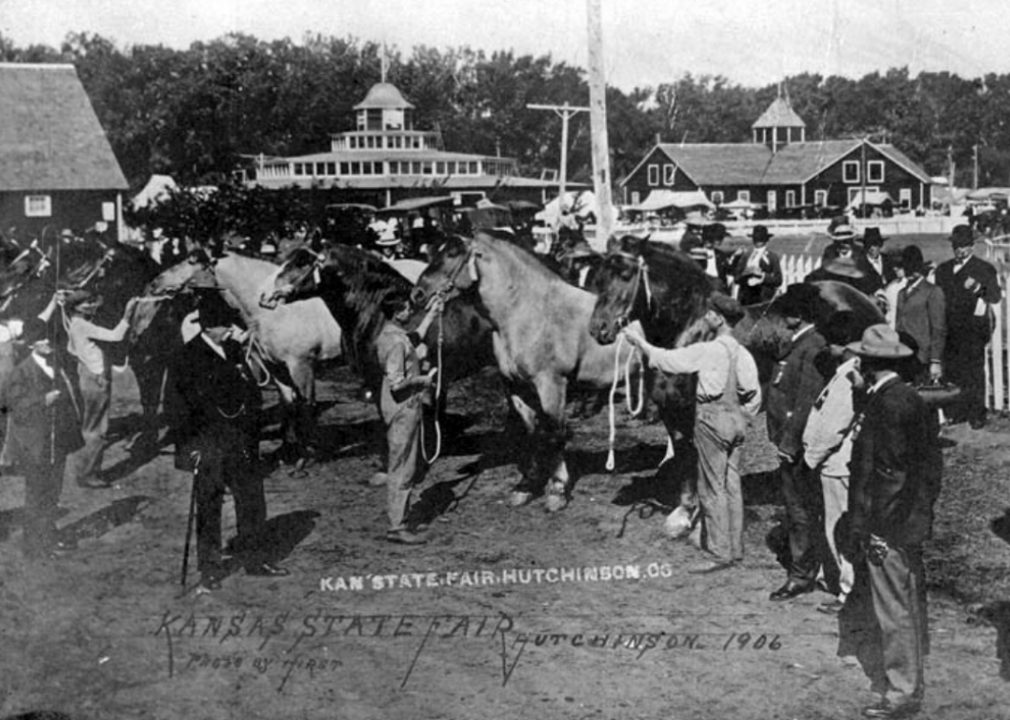
Hirst/Kansas Historical Society // Wikimedia Commons
Kansas
Kansas’ state fair dates back to 1873 when the Reno County Agricultural Society was founded. The organization put together a modest fair held in a livery stable behind the only bank in Hutchinson, a town not yet one year old. In this photo from 1906, fair participants show their horses to a judge.
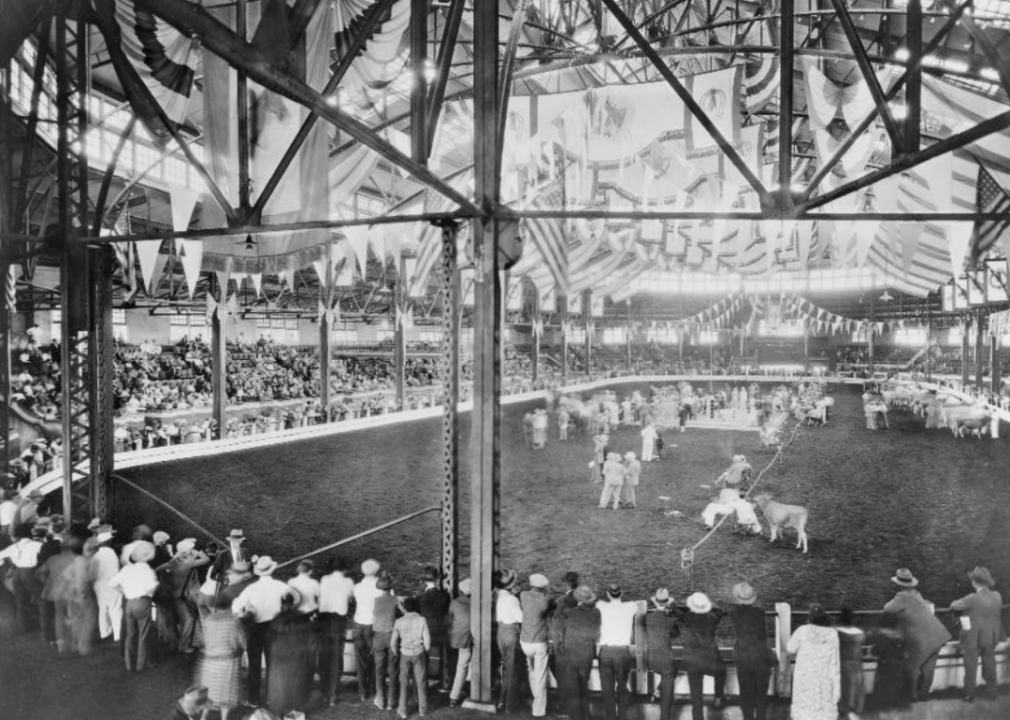
Caufield & Shook, Inc. // Library of Congress
Kentucky
The first Kentucky State Fair was held in 1902 and drew around 75,000 visitors—about 3% of the entire state at the time. Photographed here is an indoor cattle show at the 1934 Kentucky State Fair.
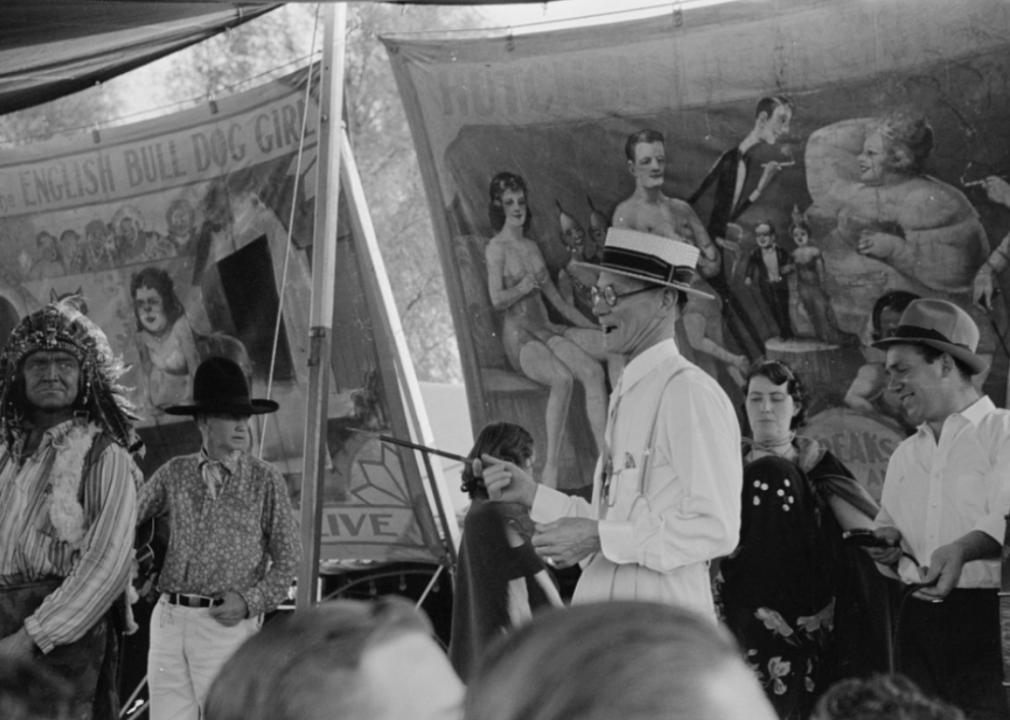
Russell Lee // Library of Congress
Louisiana
A decade after this photo was taken at the 1938 Louisiana State Fair, the United States had more than 100 traveling sideshows—or “freakshows,” as they were called. Here, a barker works at enticing fairgoers to stop and watch the full performance.
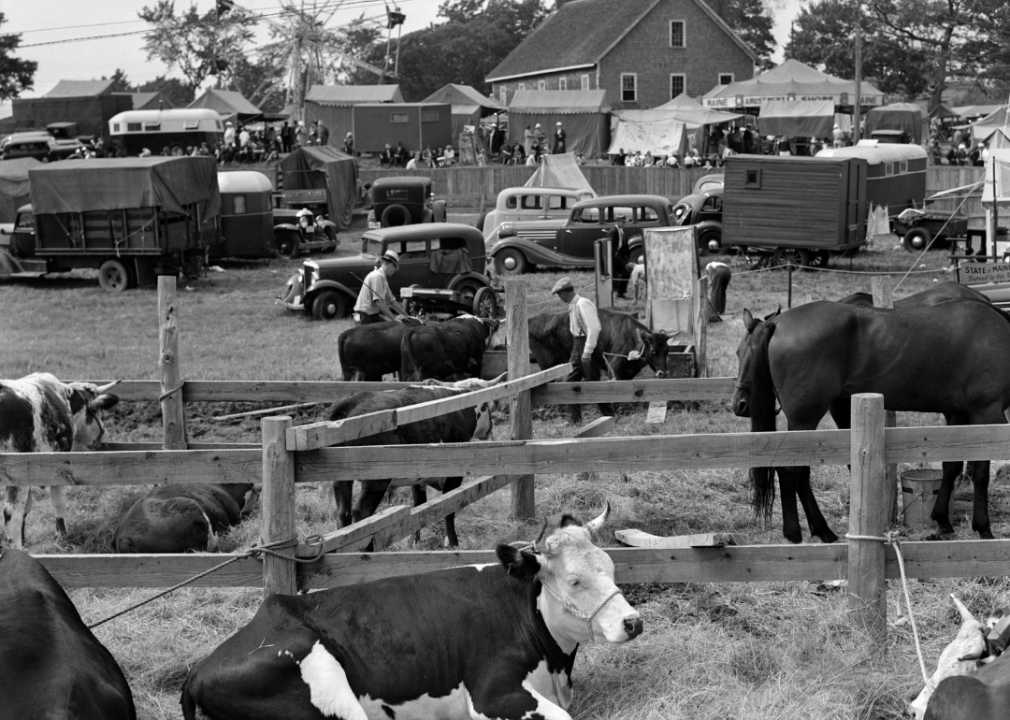
H. Armstrong Roberts/Retrofile // Getty Images
Maine
This photograph gives us a peek behind the scenes at a Maine fair in the 1930s. Showmen prepare their livestock for viewing and competition in these mini-pens outside the fair’s main gates.
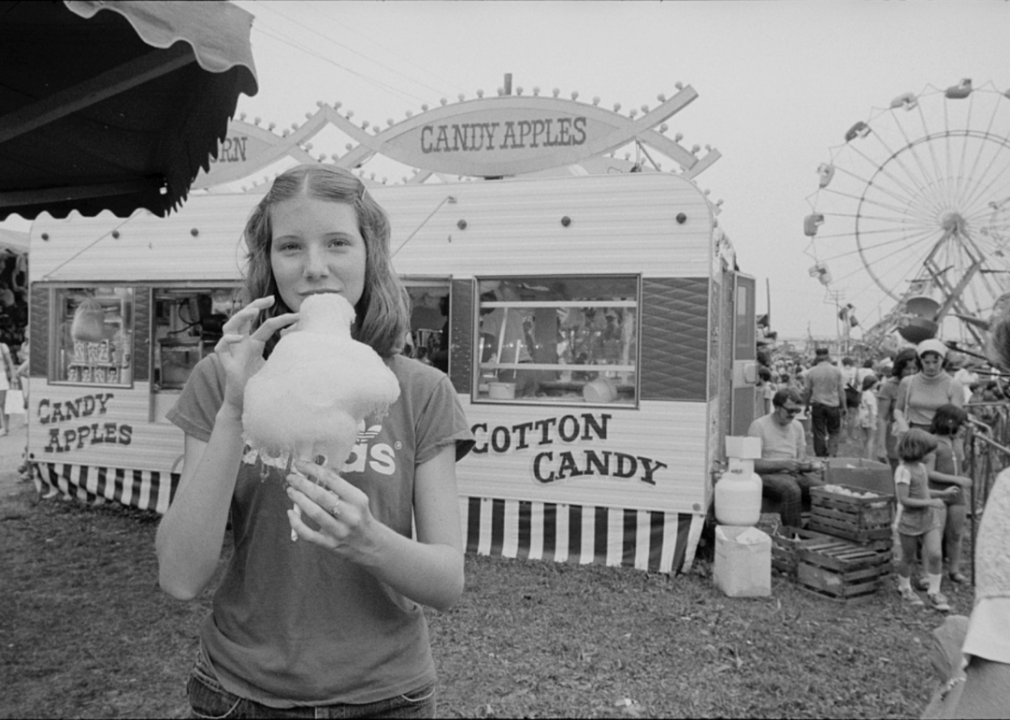
Warren K. Leffler // Library of Congress
Maryland
In the first few decades of Maryland’s state fair, concession options were fairly limited, consisting primarily of sandwiches made by farmer’s wives. These days, attendees can chow down on almost anything they can think of, from cotton candy to crab at Nick’s Grandstand Grill and Crabhouse, which is open at the fairgrounds year-round.
You may also like: From Barnum & Bailey to Annie Oakley: History of traveling entertainment in America
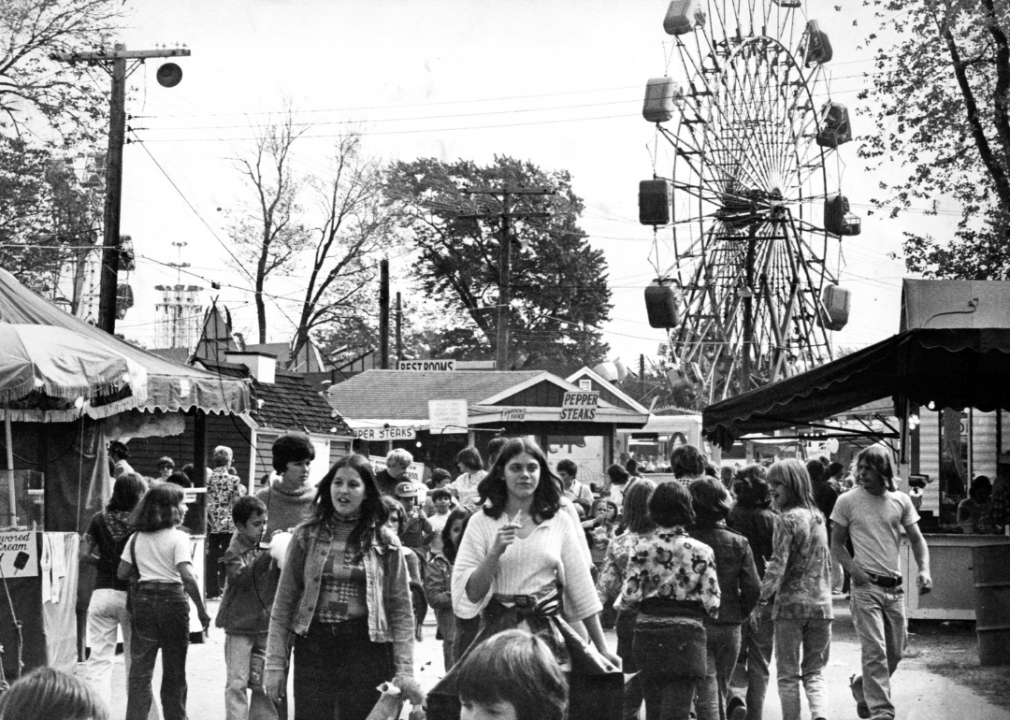
Ulrike Welsch/The Boston Globe via Getty Images
Massachusetts
The first Massachusetts State Fair, which took place in 1807, was a tiny event consisting only of sheep-shearing demonstrations. However, by 1976, as demonstrated by this photo, it had grown exponentially and was just as much an amusing experience as an educational one.
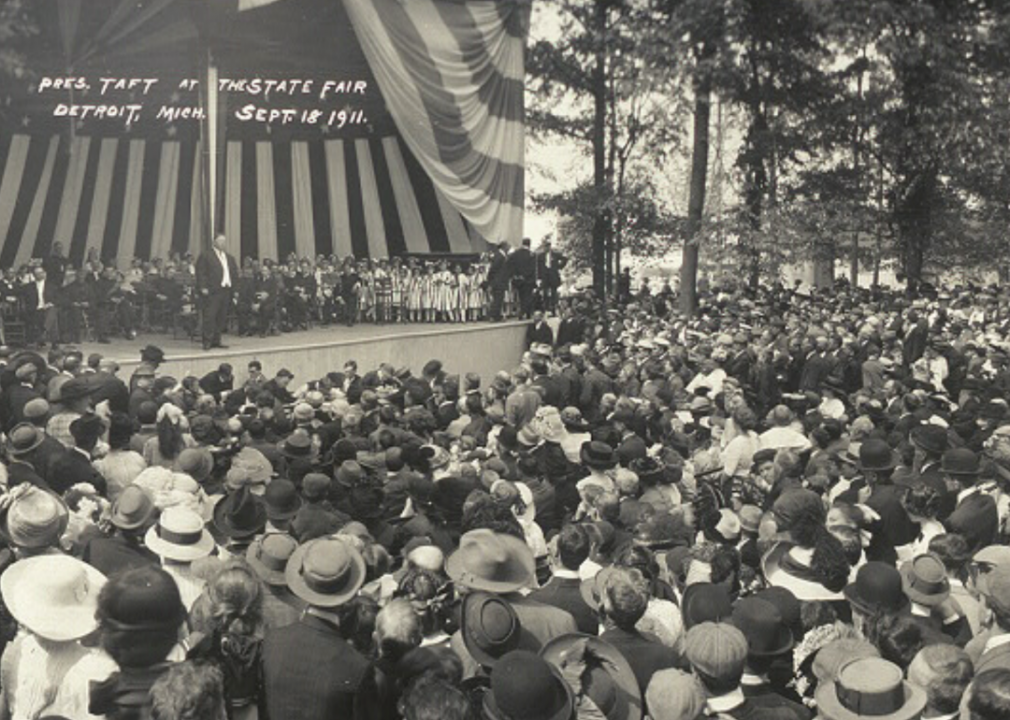
H.N. Nelson // Library of Congress
Michigan
Presidents and presidential candidates have made a point of attending state fairs throughout history. Here, President William Howard Taft addresses crowds at the state fair in Detroit in September 1911.
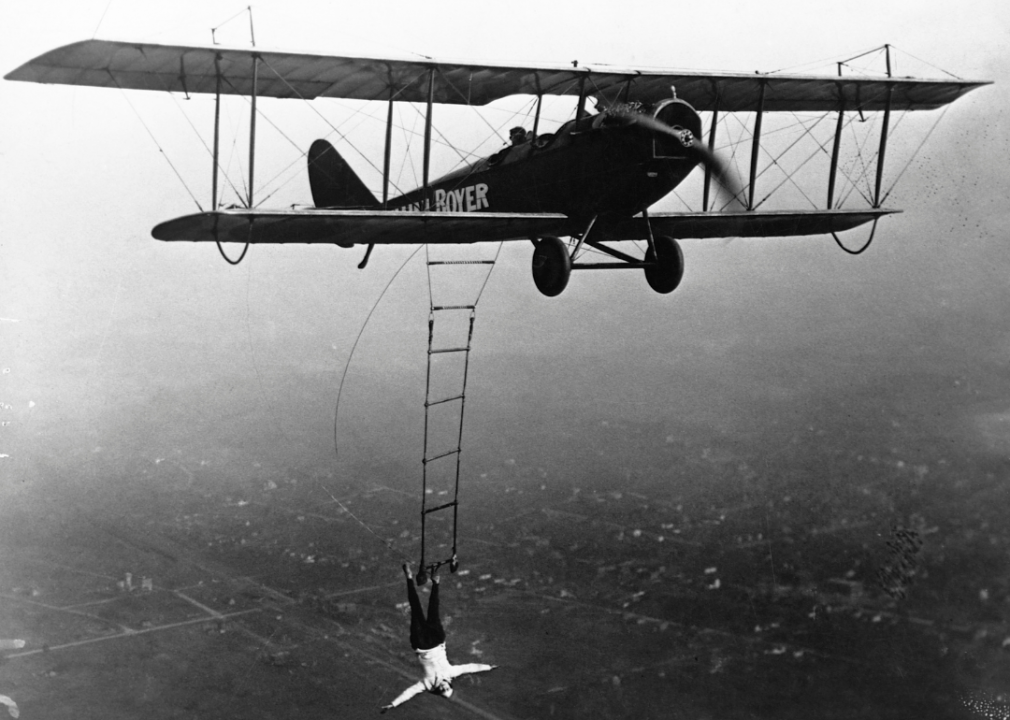
Minnesota Historical Society/Corbis via Getty Images
Minnesota
While we tend to associate this sort of daredevil act with circuses rather than state fairs, the local events have been just as instrumental in promoting audiences’ love of hair-raising stunts. In this photo, 18-year-old aviatrix Lillian Boyer of Chicago hangs from her Curtiss JN-4 biplane ahead of performing at the Minnesota State Fair in the early 1920s.
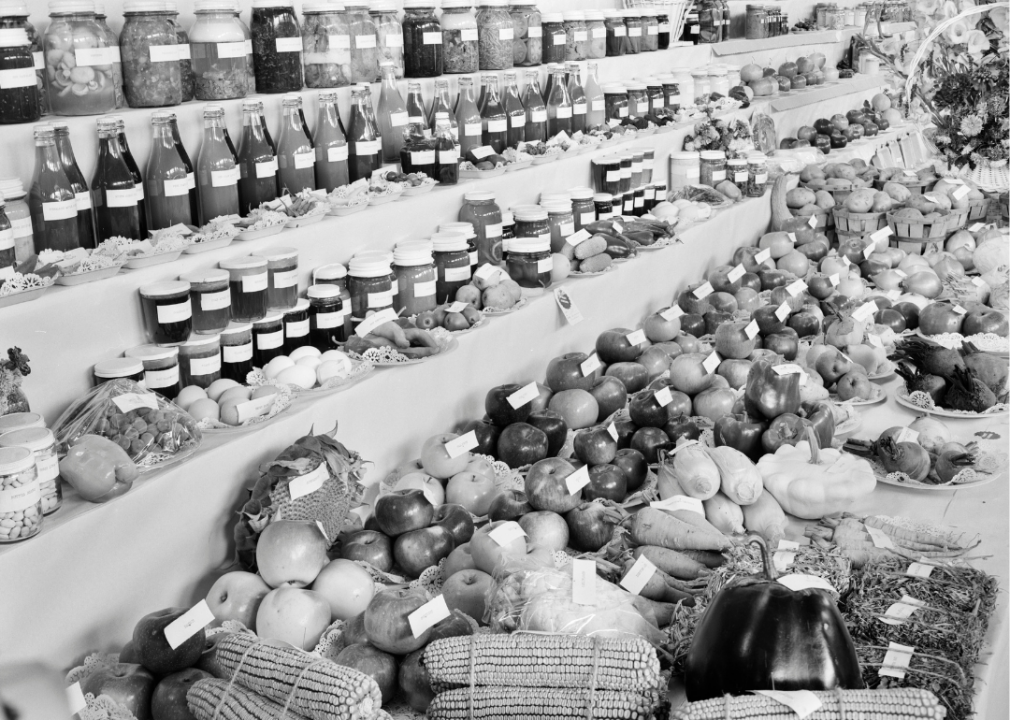
Heilman/Classicstock // Getty Images
Mississippi
The bounty of the state of Mississippi is on display in the rows of jellies, fruits, vegetables, and miscellaneous food items ready to be judged at this 1950 state fair.
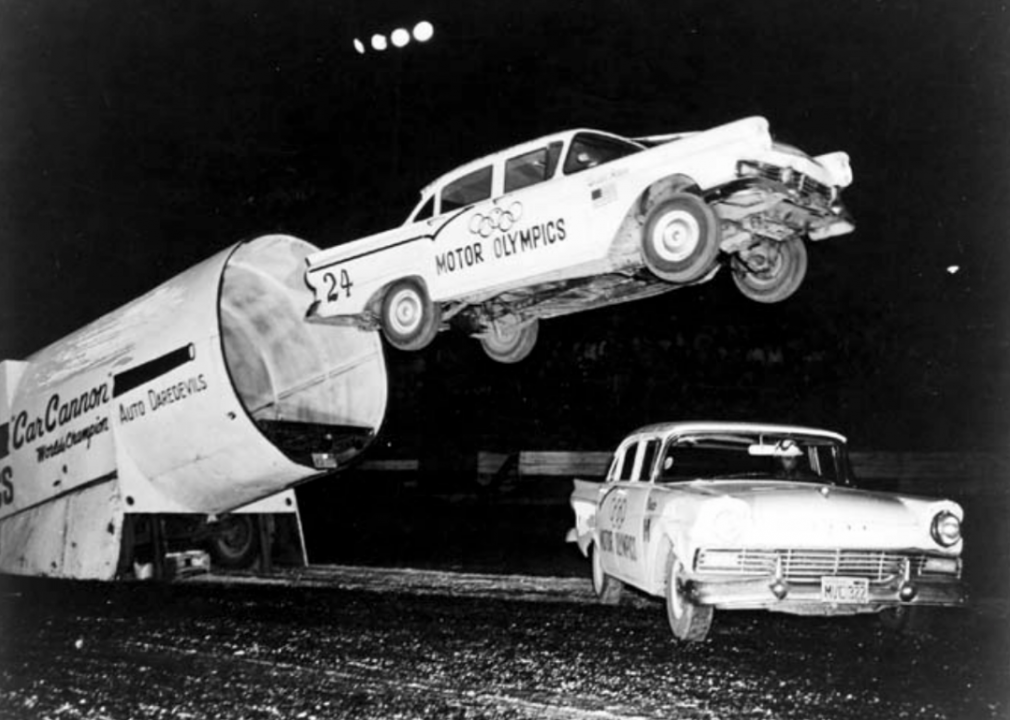
Missouri State Archives // Wikimedia Commons
Missouri
This auto daredevil show at the Missouri State Fair in the 1960s was possibly inspired by the wild wheeled stunts of Evel Knievel, whose popularity was skyrocketing in the same decade.
You may also like: Notable new words coined the year you were born
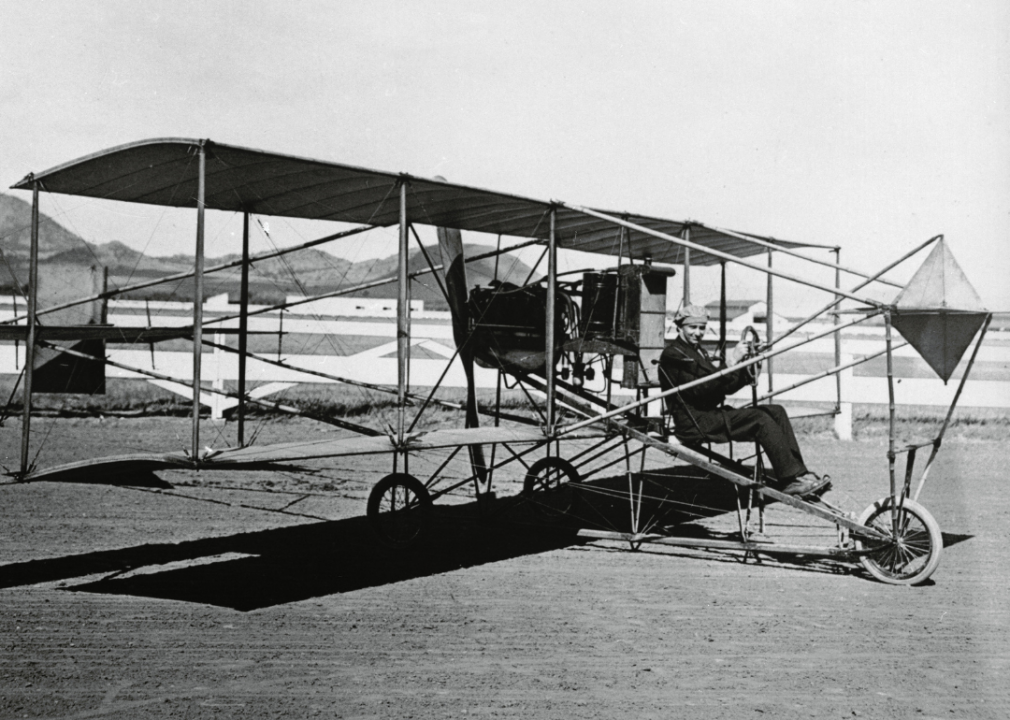
Hulton Archive // Getty Images
Montana
Two days after he performed at the Montana State Fair, becoming the first person to fly over the continental divide, Cromwell Dixon died in a plane crash at the Washington State Fair. At only 19 years old at the time, Dixon was the youngest licensed pilot in the country.
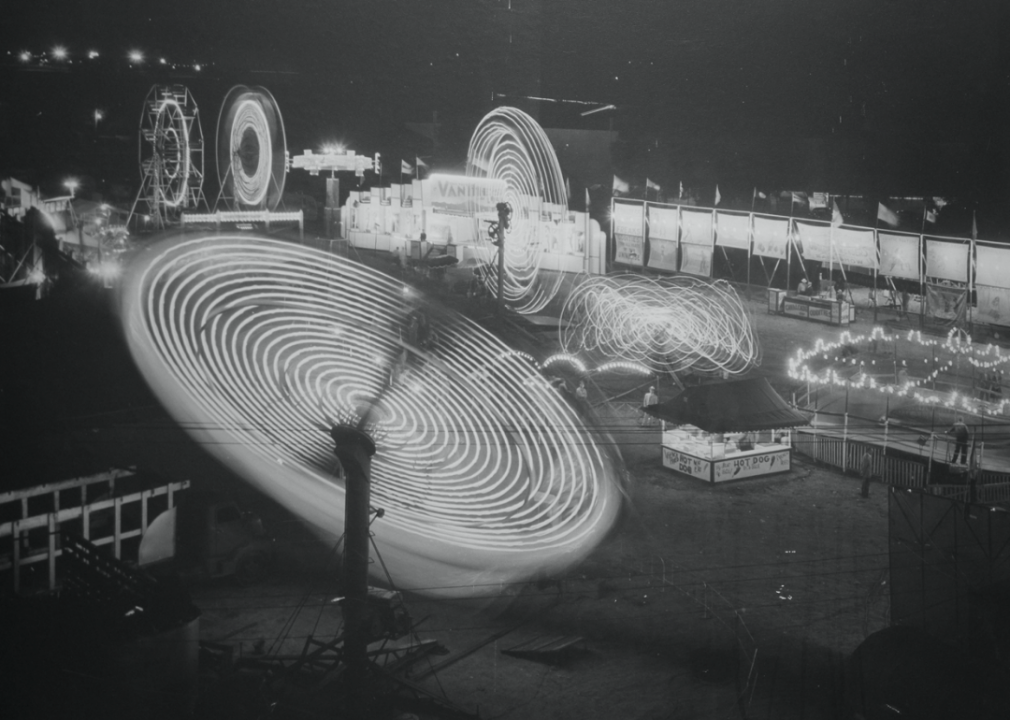
Public Domain // Wikimedia Commons
Nebraska
While fair’s today are typically considered family-friendly events, that hasn’t always been the case—in Nebraska, at least. In the fair’s earliest years, before alcohol sales were banned, patrons frequently complained of drunken attendees and indecent (i.e., burlesque) shows.
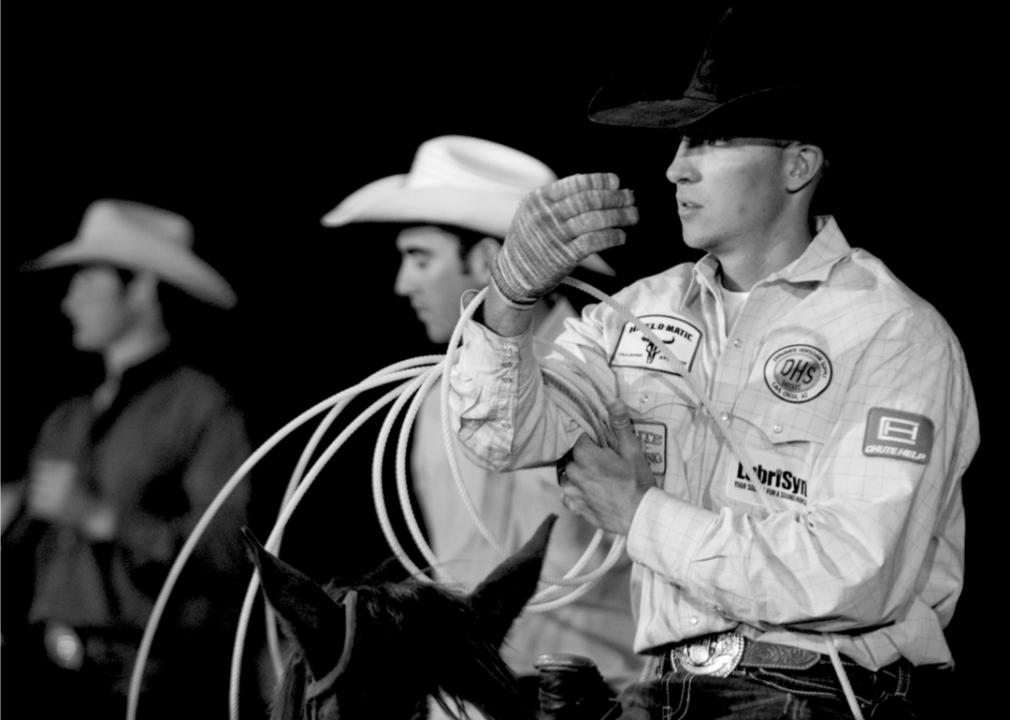
Kobby Dagan // Shutterstock
Nevada
State fairs that include cowboy contests often have a calf roping event, in which participants, like this Nevada cowboy, compete to catch and tie up a free-running calf as quickly as possible.
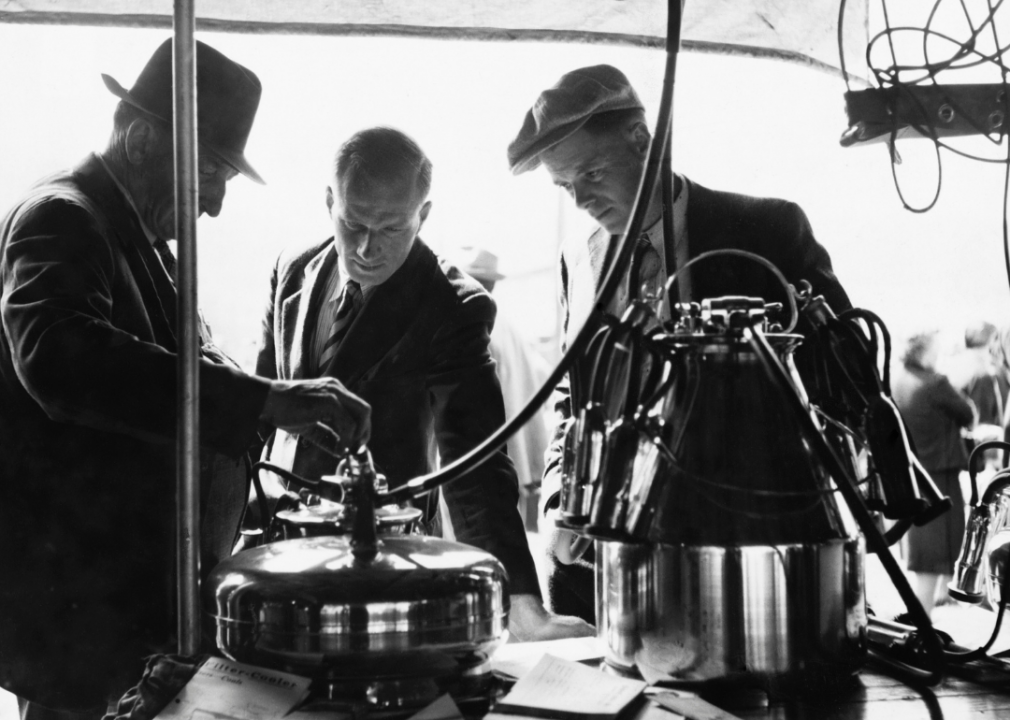
Genevieve Naylor/Corbis via Getty Images
New Hampshire
New farming equipment, brought for display by the various companies, was once a huge draw at state fairs. However, as the number of family-run farms has dwindled, the number of machines and implements on display at fairs has shrunk significantly. Here, men at the 1940 New Hampshire State Fair look at a new model of milking machine made by the Syracuse Milking Machine Company.
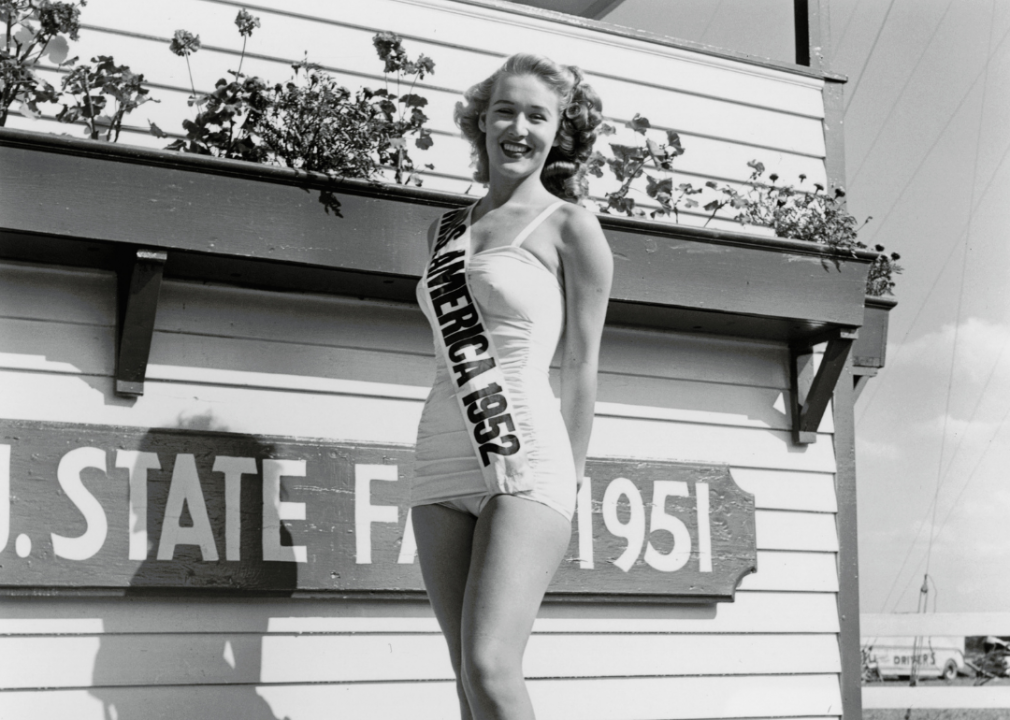
Hulton Archive // Getty Images
New Jersey
Many state fairs have included beauty pageants at some point in their history. These competitions essentially provided the basis for bigger events like the Miss America pageant. Here, things come full circle when Miss America 1951, Yolande Betbeze, appeared at the 1951 New Jersey State Fair.
You may also like: Iconic products released the year you were born
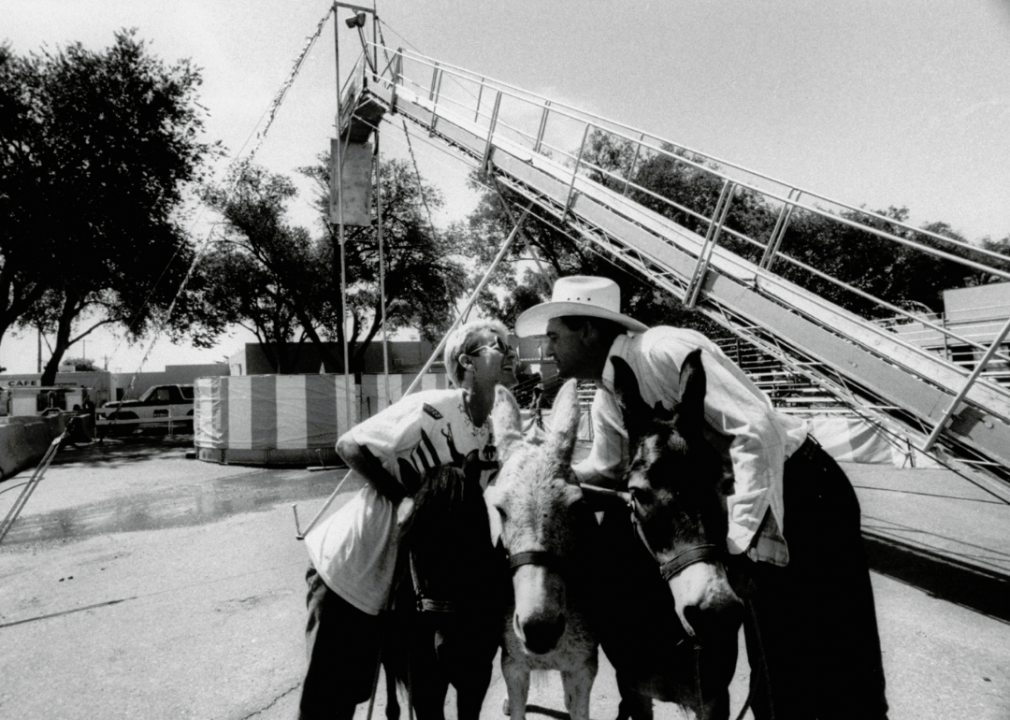
Barbara Laing // Getty Images
New Mexico
From the late 1950s through the 1990s, Tim and Patty Rivers toured with their three diving mules to state fairs around the country. The animals would leap off of an 18-foot high diving platform into a water tank. Running the only act of its kind in the country, the pair often found themselves bumping heads with animal cruelty activists who detested the “inhumane” show.
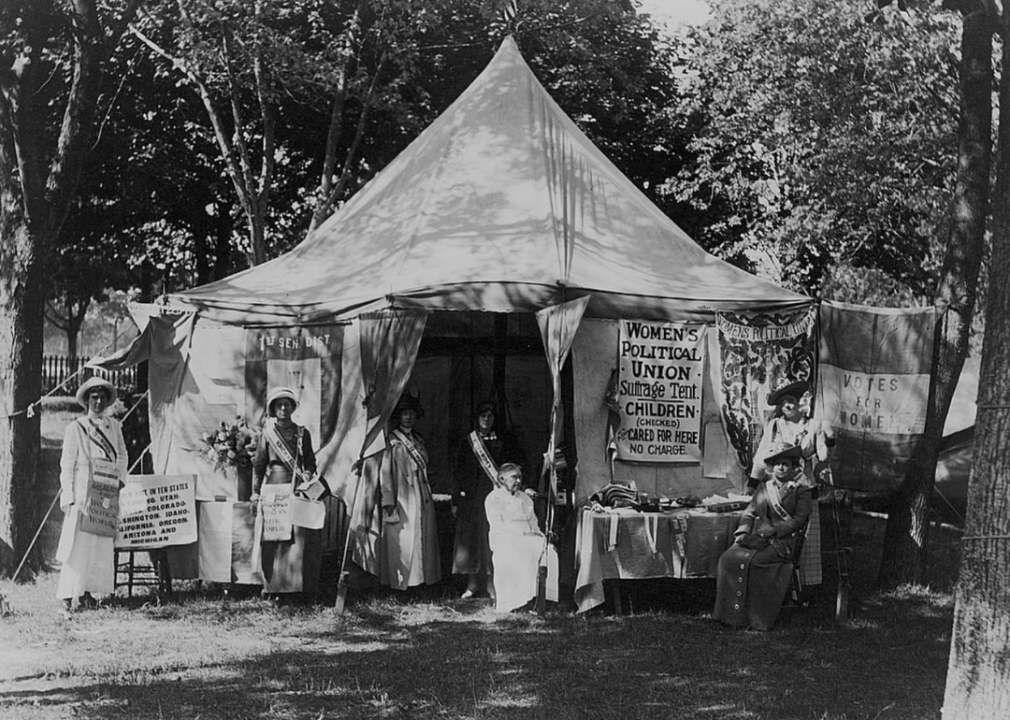
Library of Congress
New York
Another example of politics taking center stage at a state fair, this suffrage tent set up at Suffolk County Fair in Long Island, New York, in 1914 offers free child care as well as suffragette sashes for women who supported the cause.
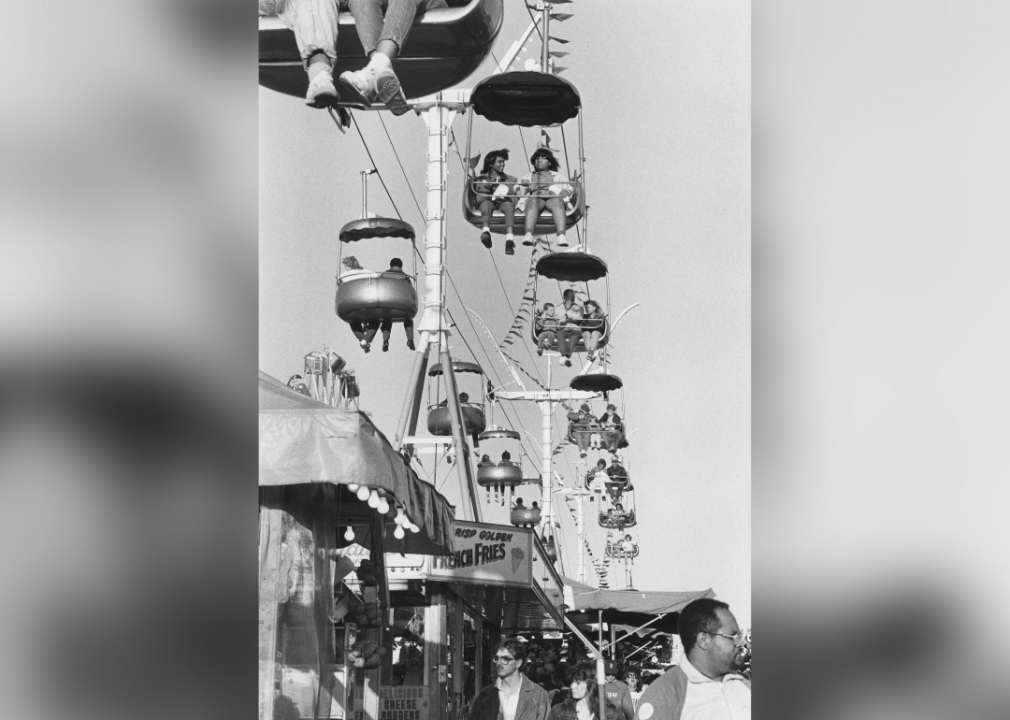
Barbara Alper // Getty Images
North Carolina
Fairgoers soar above the midway on this ride at the North Carolina State Fair in Raleigh, North Carolina, in 1988.
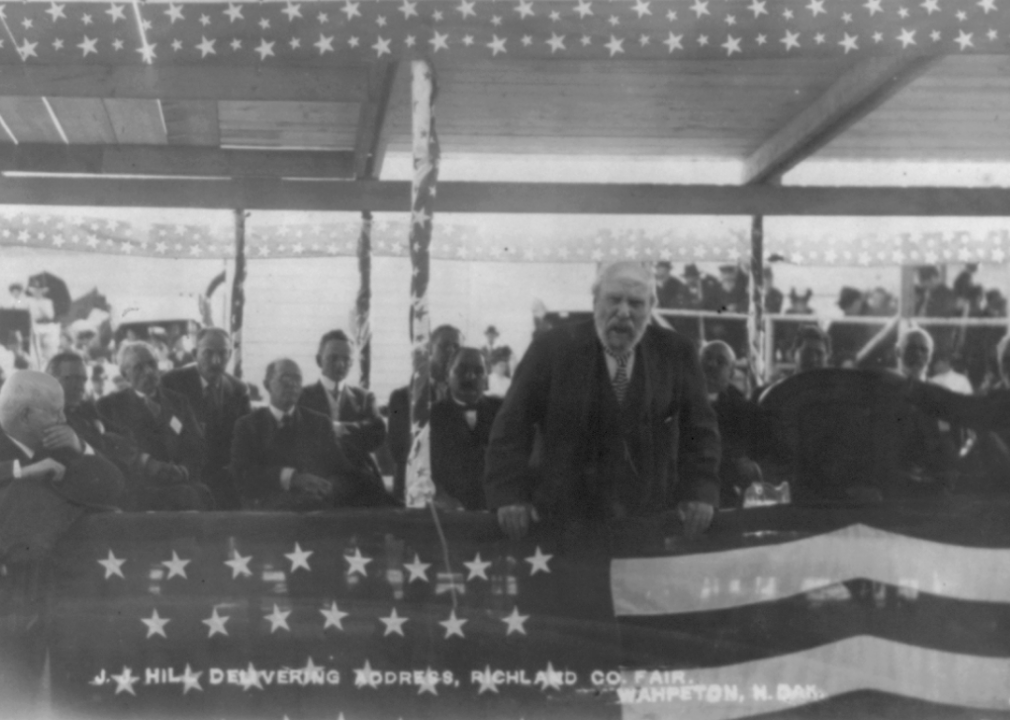
W,O. Olson // Library of Congress
North Dakota
Lectures, who educated attendees on everything from best farming practices to religion, were a staple of state fairs past. Here, railroad director James Jerome Hill delivers one of these talks to a rapt audience at a North Dakota State Fair in 1909.
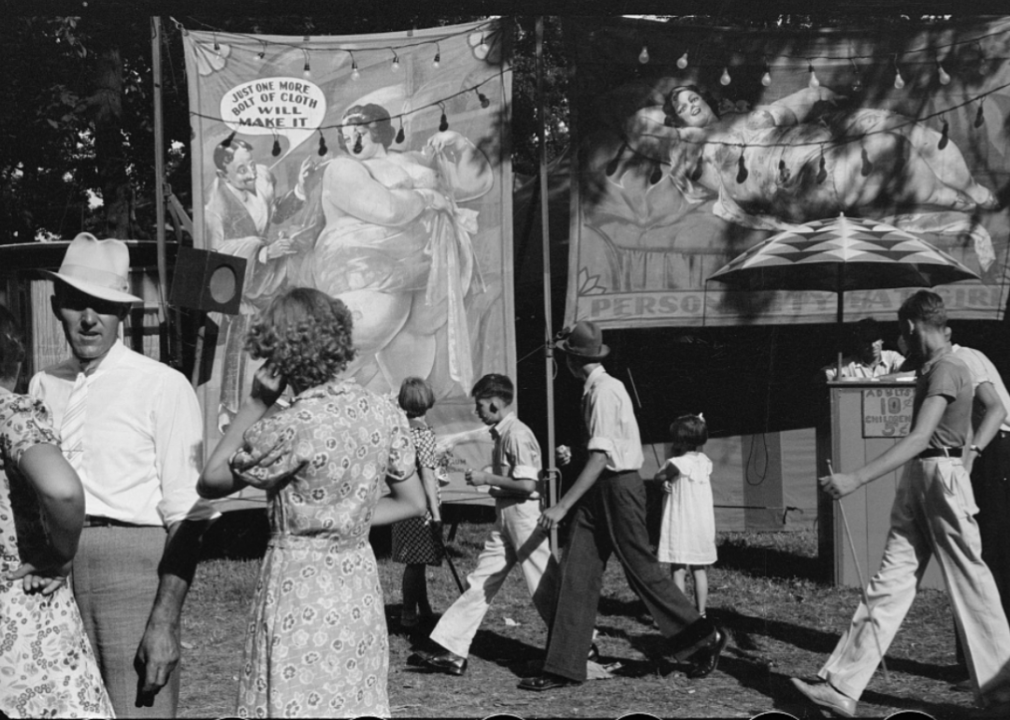
Ben Shahn // Library of Congress
Ohio
Sideshows, like this one at a 1938 Ohio State Fair showing off a famous “fat lady,” have all but disappeared from today’s state fairs. Their waning popularity is seemingly for the best, as they were generally exploitative and, in some cases, abusive.
You may also like: Where U.S. first ladies went to college
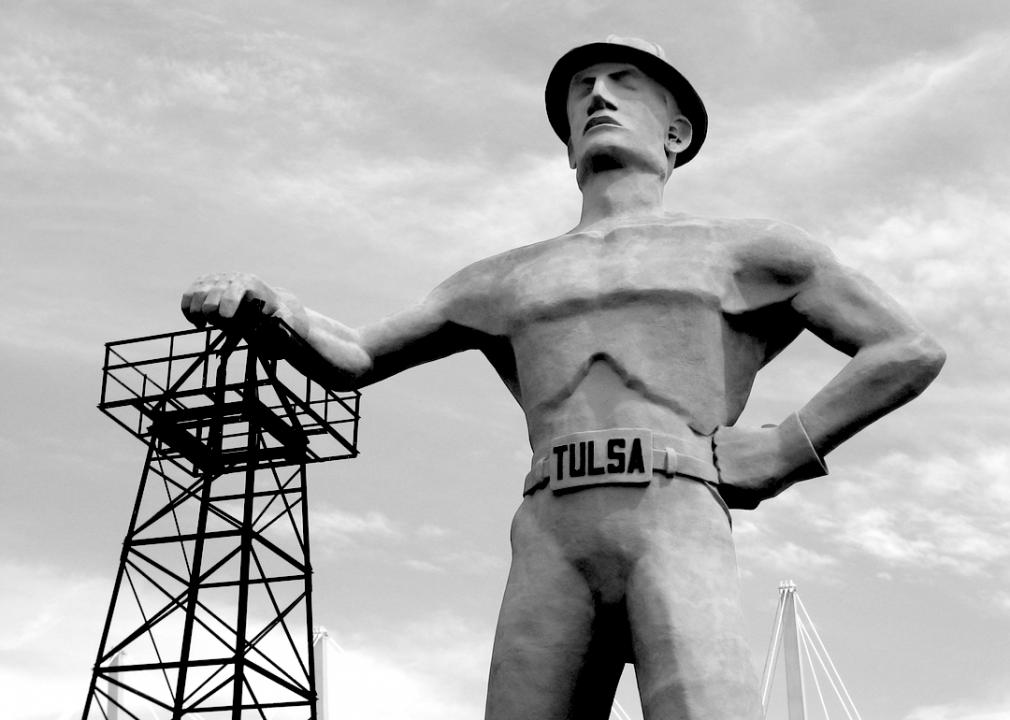
Phil Anthony // Shutterstock
Oklahoma
First erected in 1953, not for the state fair but for the International Petroleum Exposition and Congress, which was held on the Oklahoma state fairgrounds, the Golden Driller has become a landmark in the Sooner State. According to state officials, the oilman is the largest free-standing statue in the world.
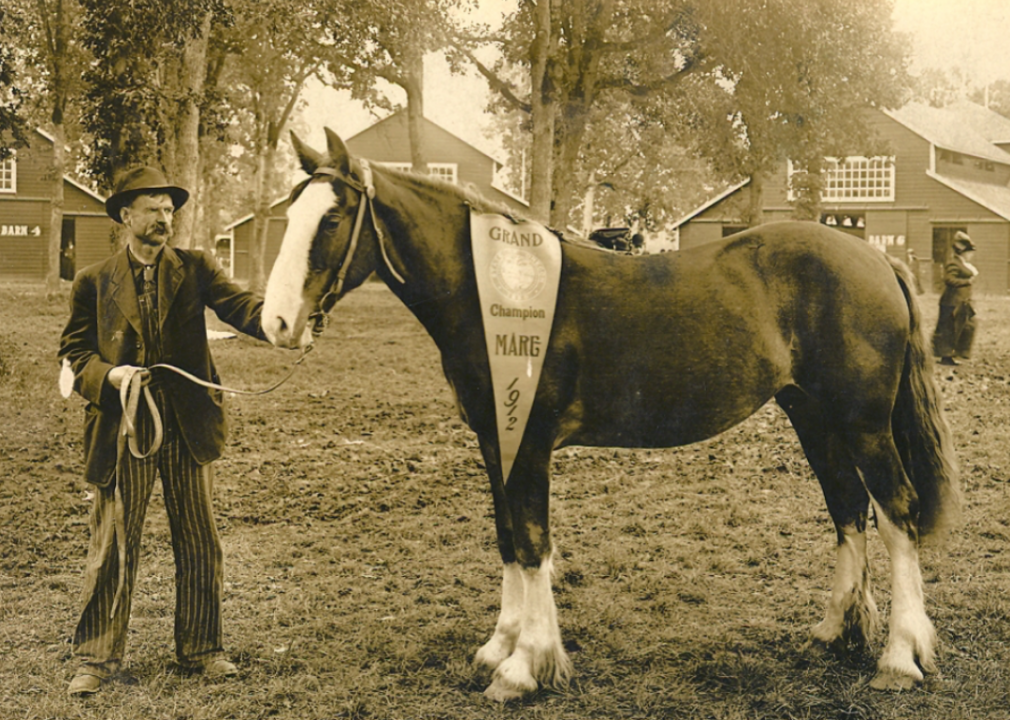
OSU Special Collections & Archives // Wikimedia Commons
Oregon
The Oregon State Fair is so massive that each year the fairgrounds temporarily become the fifth-largest city in the state. Winning a top prize then, like this 1912 Grand Champion mare, is no small feat.
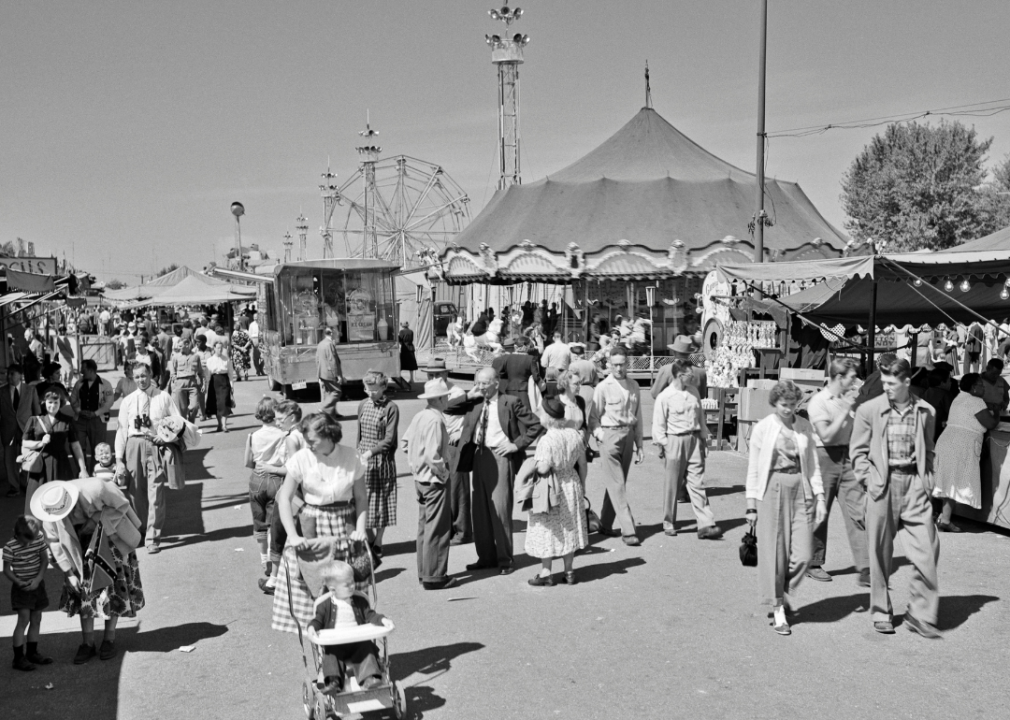
Heilman/Classicstock // Getty Images
Pennsylvania
First held in 1765, a full decade before the Declaration of Independence was signed, the York State Fair is the oldest in the United States. Here, a crowd strolls down the fair’s midway in the mid-1950s, nearly two centuries later.
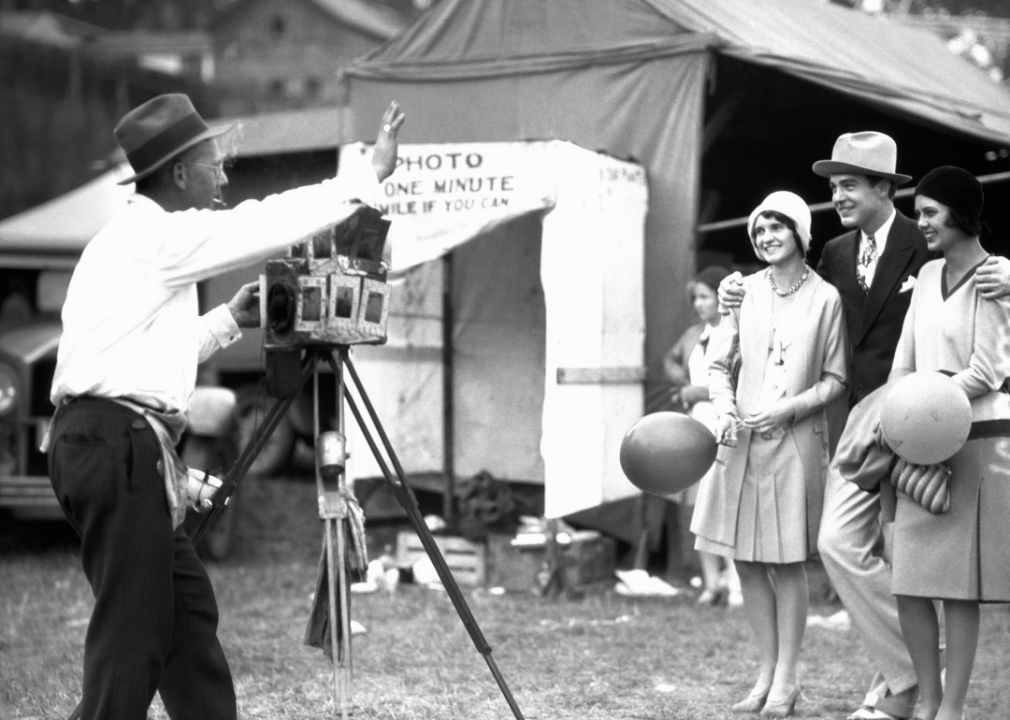
H. Armstrong Roberts/Retrofile // Getty Images
Rhode Island
Many state fairs experienced their heyday in the runup to the Great Depression—the events had moved beyond being purely educational exhibitions but money to put them on had not yet run out. Here, a man gets his photo taken with his dates at a Rhode Island State Fair in the early 1920s.
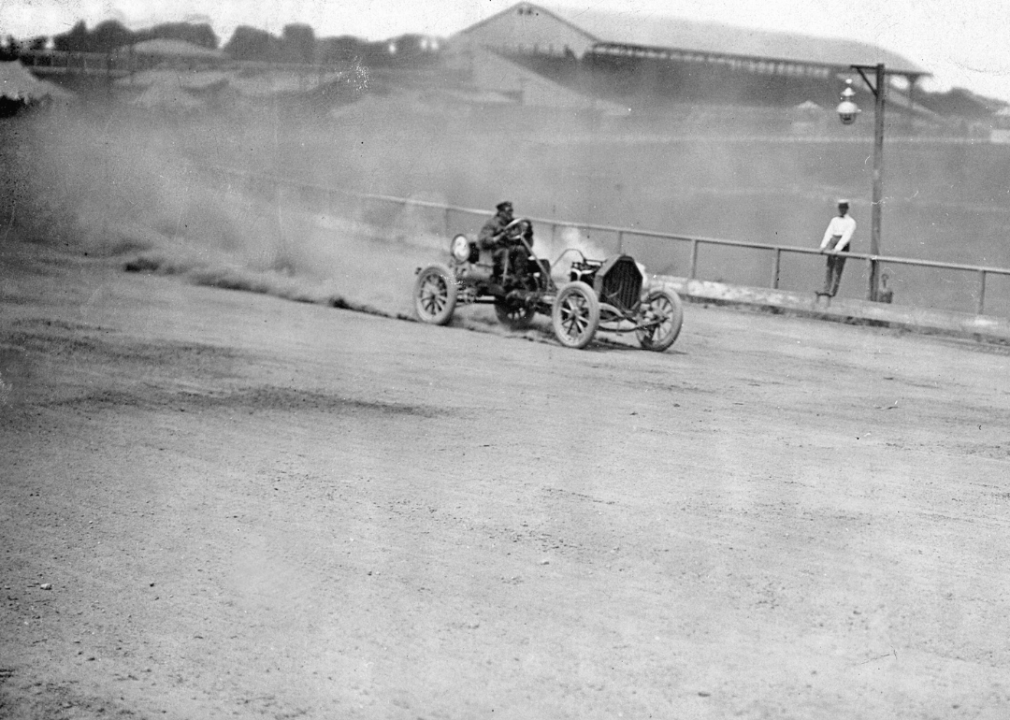
ISC Images & Archives via Getty Images
South Carolina
This photo provides an example of an early automobile racing event, many of which were run at state and county fairground tracks, often in conjunction with the fair itself. Lots of these dirt racetracks were also used for horse racing.
You may also like: Origin stories behind 30 holidays
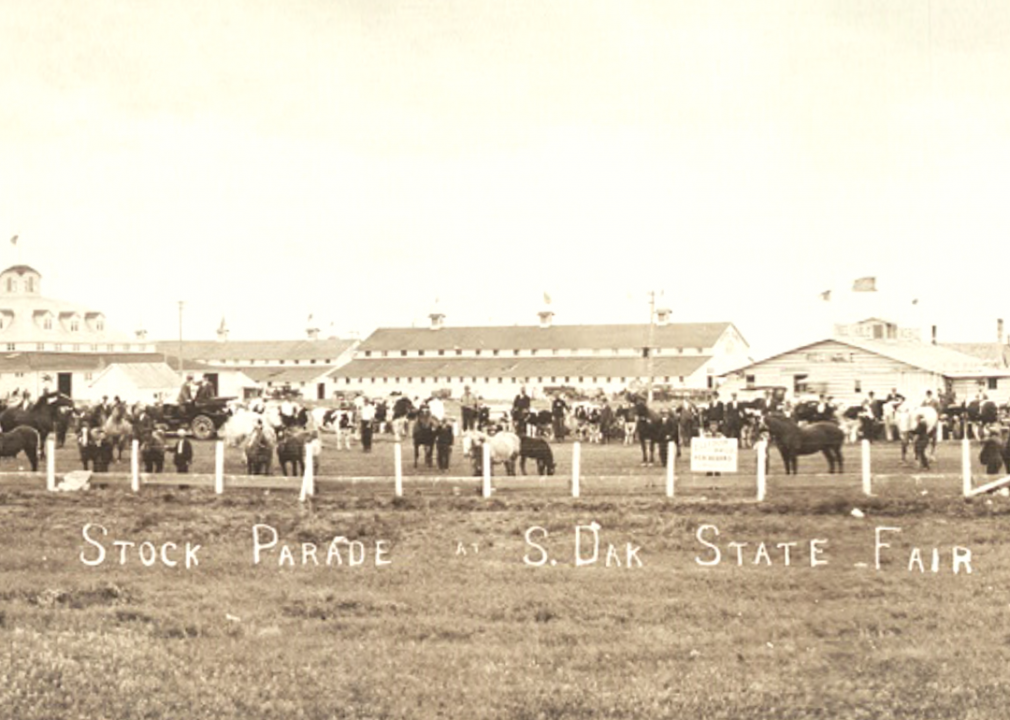
F. H. Camp // Library of Congress
South Dakota
In South Dakota, local 4-H clubs play a huge role in the state fair. From running booths to exhibiting livestock (as demonstrated here by this stock parade at a 1912 fair), these groups provide the backbone for the annual event.
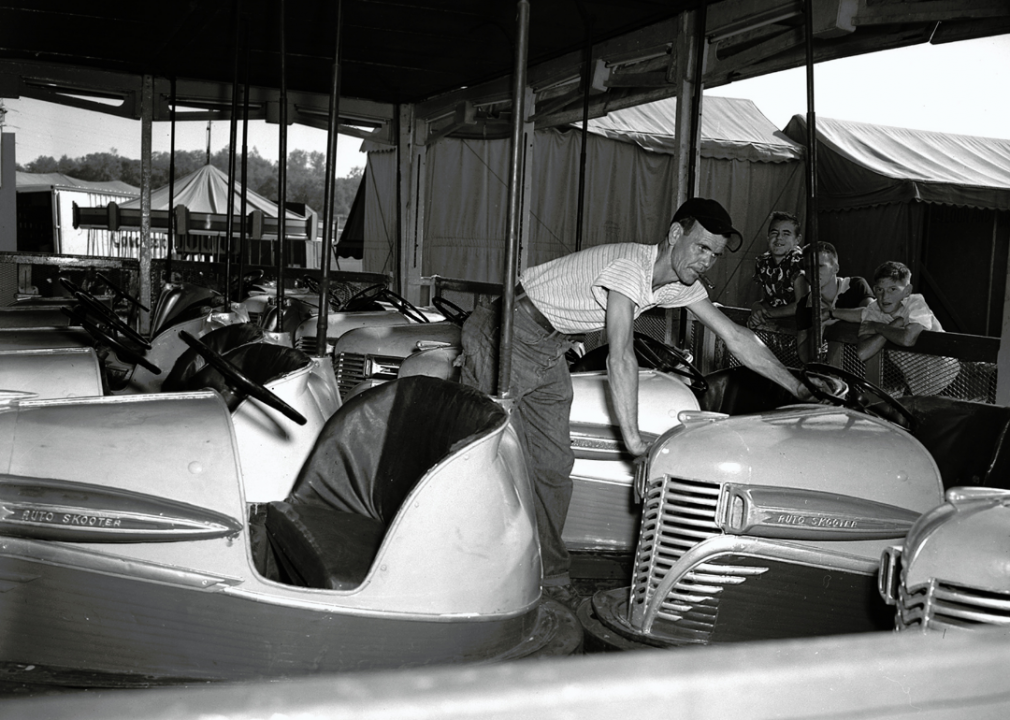
Bob Grannis // Getty Images
Tennessee
Classic bumper cars, like the ones seen at state fairs and amusement parks today, are typically attached to long poles that scrape across an electric grid on the ceiling and transfer power to the cars themselves. Here, a bumper car attendee resets the cars between rides at the 1953 Tennessee State Fair.
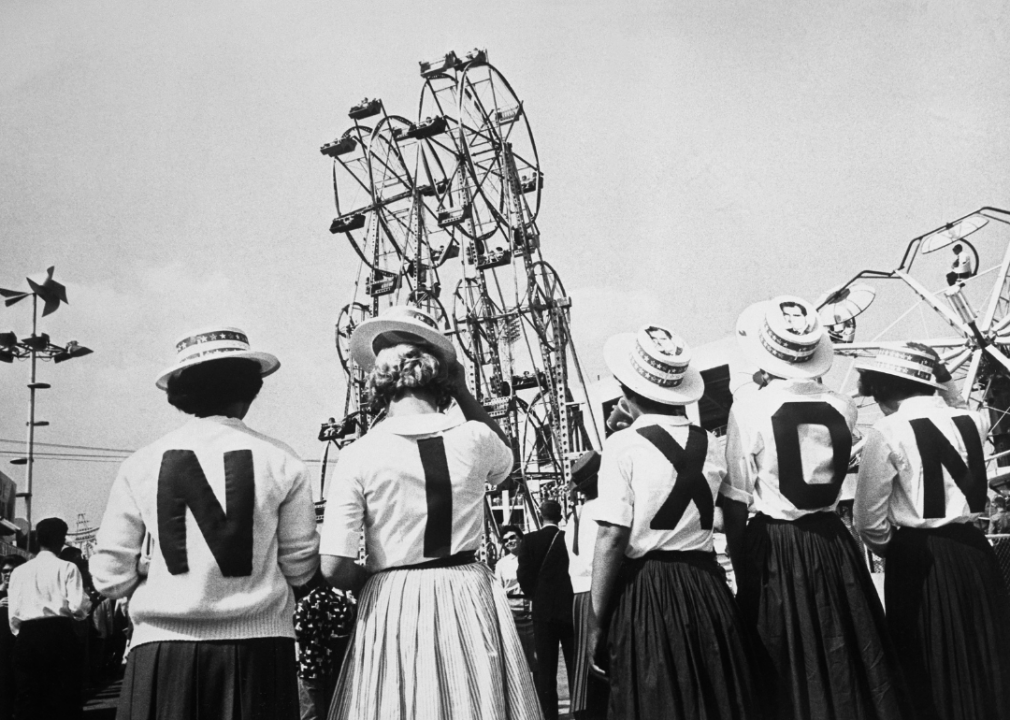
Bettmann // Getty Images
Texas
State fairs have long been places for political candidates to make the rounds and connect with their constituents in hopes of winning another vote or two. Here, a group of girls at the 1960 Texas State Fair demonstrate their support for Richard Nixon, the Republican candidate for president at the time, who was in attendance.
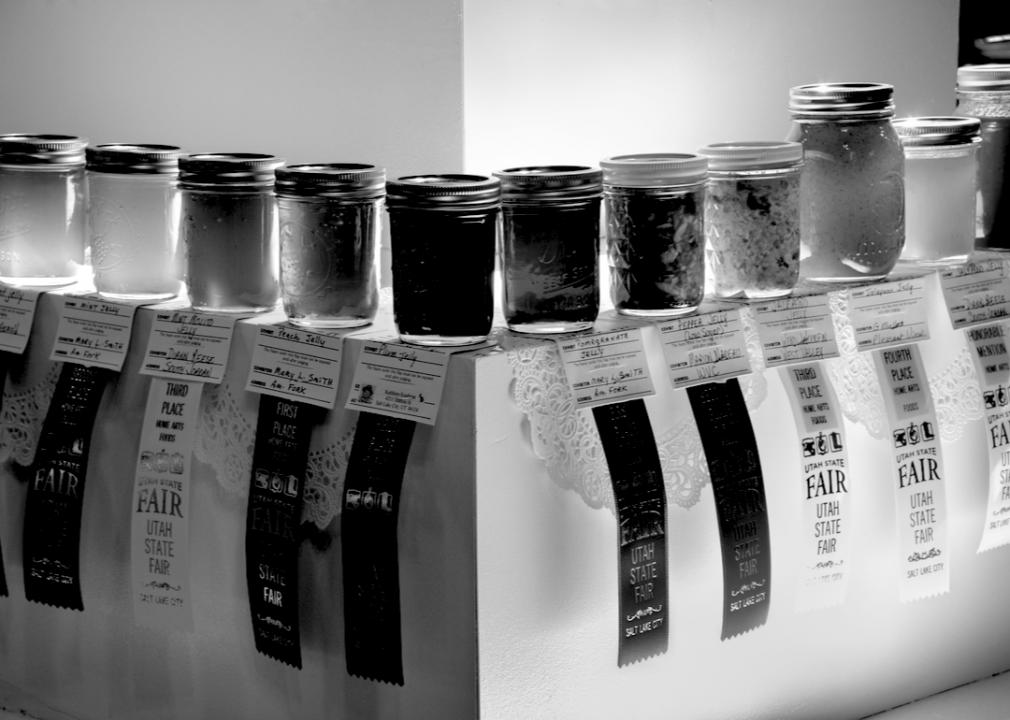
YegoroV // Shutterstock
Utah
The Desert Agricultural and Manufacturing Society, an incorporated body tasked with “promoting the arts of domestic industry” in Utah, was the group behind the state’s first fair. It makes sense, then, why the fair places such an extraordinary emphasis on home arts—like canning, quilting, and agriculture—to this day, as demonstrated by these homemade jellies that won ribbons in 2009.
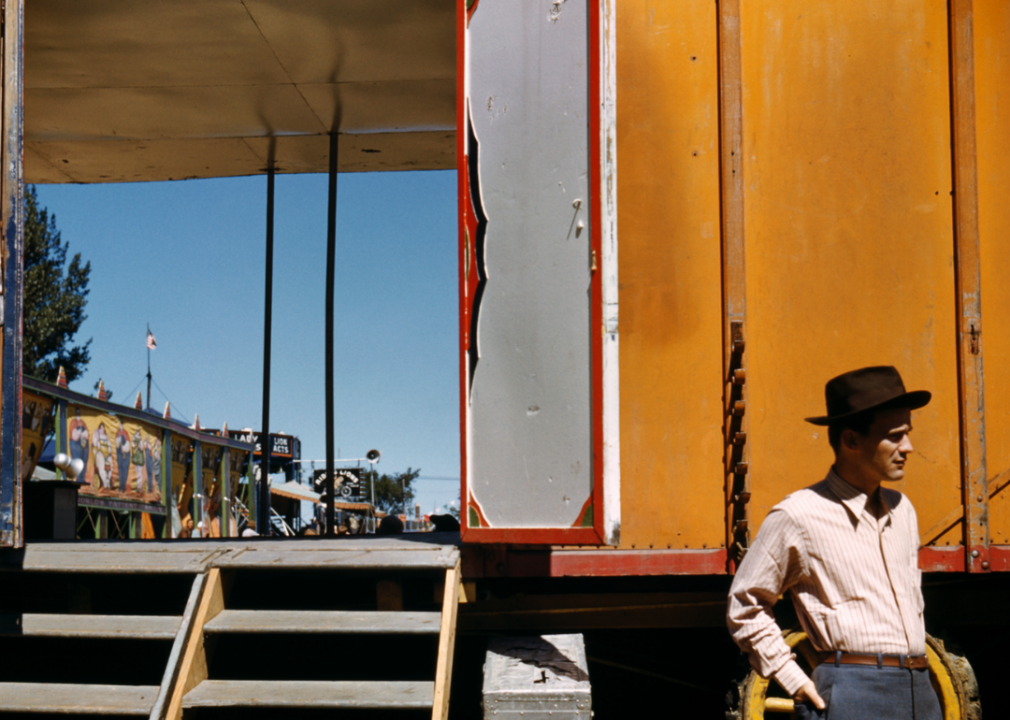
Jack Delano // Library of Congress
Vermont
Vermont has one of the oldest state fairs in the country, holding its first event way back in 1846. Here, almost a century later in 1941, a fairgoer takes a respite in the shade of a train car while enjoying the day.
You may also like: What life was like in New York City 100 years ago
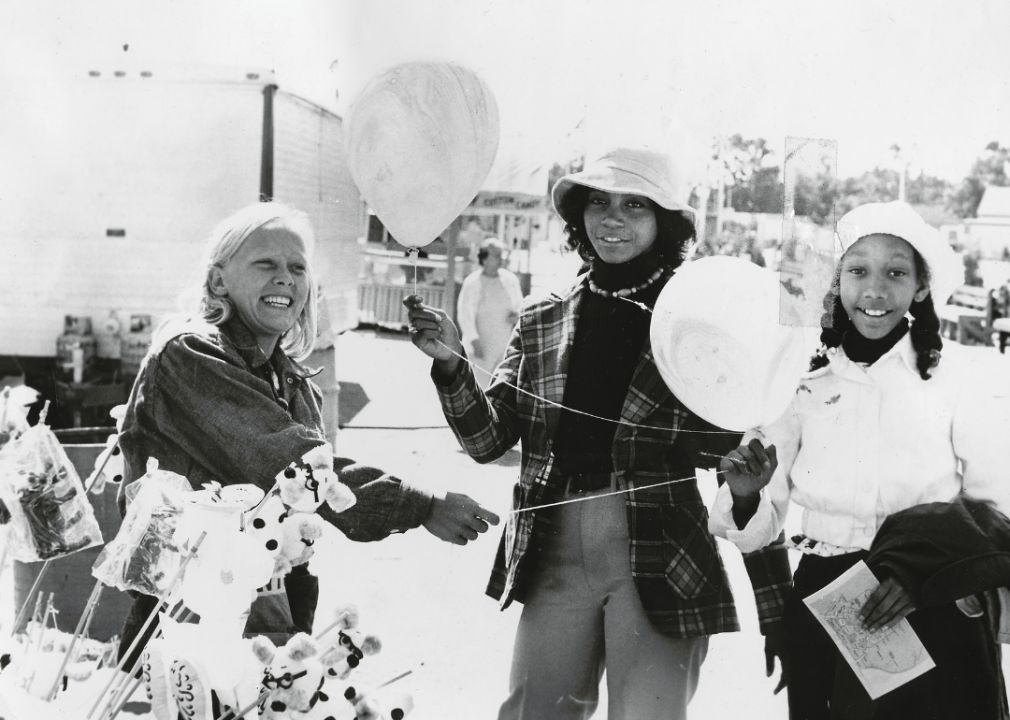
Afro American Newspapers/Gado // Getty Images
Virginia
Many state fairs no longer allow minors to attend without an accompanying adult. That hasn’t been the case at the Virginia State Fair, where young adults are allowed to roam as freely as these young ladies did in 1975.
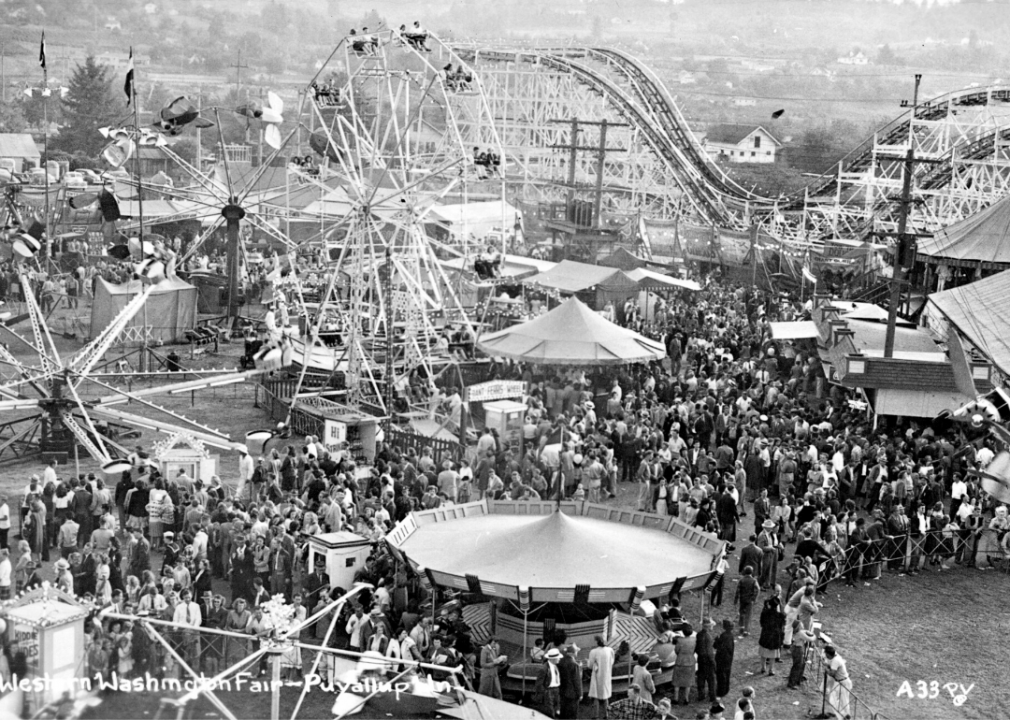
Vintage Images // Getty Images
Washington
Though carnival rides first began appearing at the Washington State Fair in the 1920s, they became a focal point of the event in the 1930s. The various rides pictured here on the Puyallup fairgrounds in the ’30s were powered by gasoline engines.
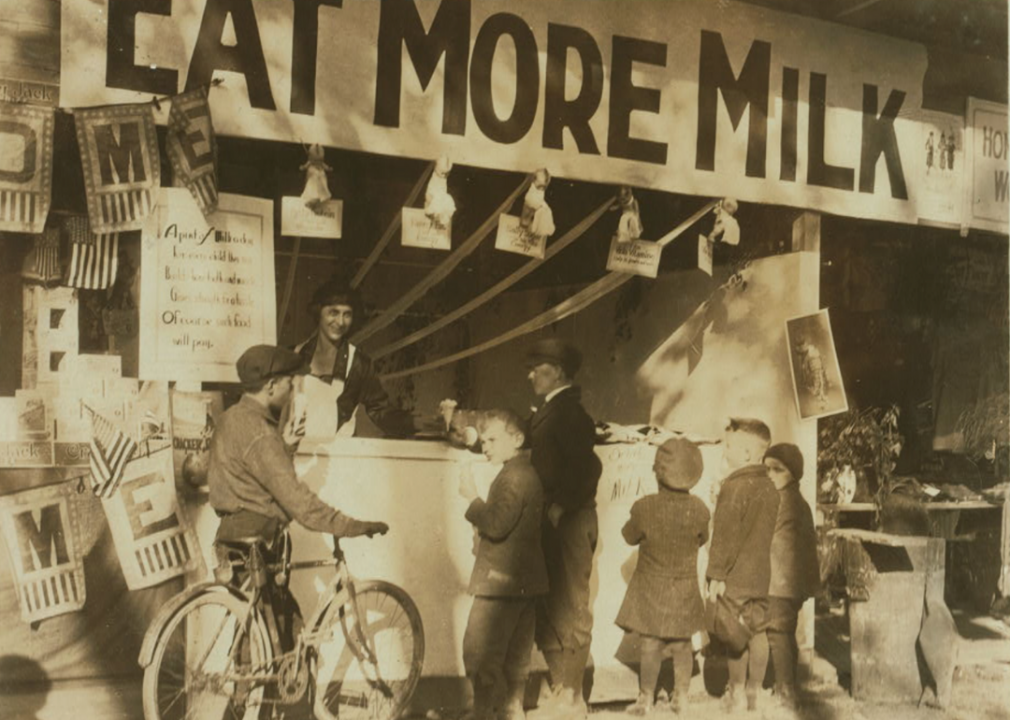
Lewis Wickes Hine // Library of Congress
West Virginia
According to West Virginia historians, among the items judged at the first state fair back in 1854 were fruit and dairy items. The tradition continued for years, as evidenced by this photo of the milk booth at the 1921 fair in Charleston, West Virginia.
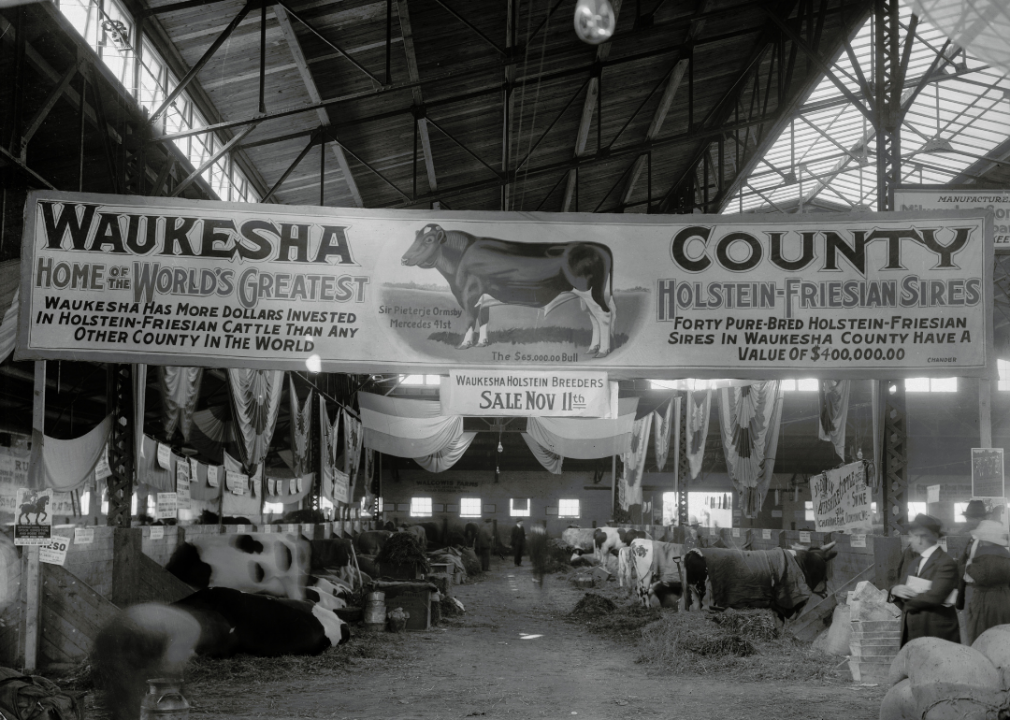
Melvin E. Diemer/Wisconsin Historical Society // Getty Images
Wisconsin
Commonly referred to as the dairy capital of America, it’s not at all surprising that dairy animals and byproducts play a large part in the state’s fair. Pictured here is an exhibit of Holstein Friesian cows, the world’s highest production dairy animals, at the 1920 event.
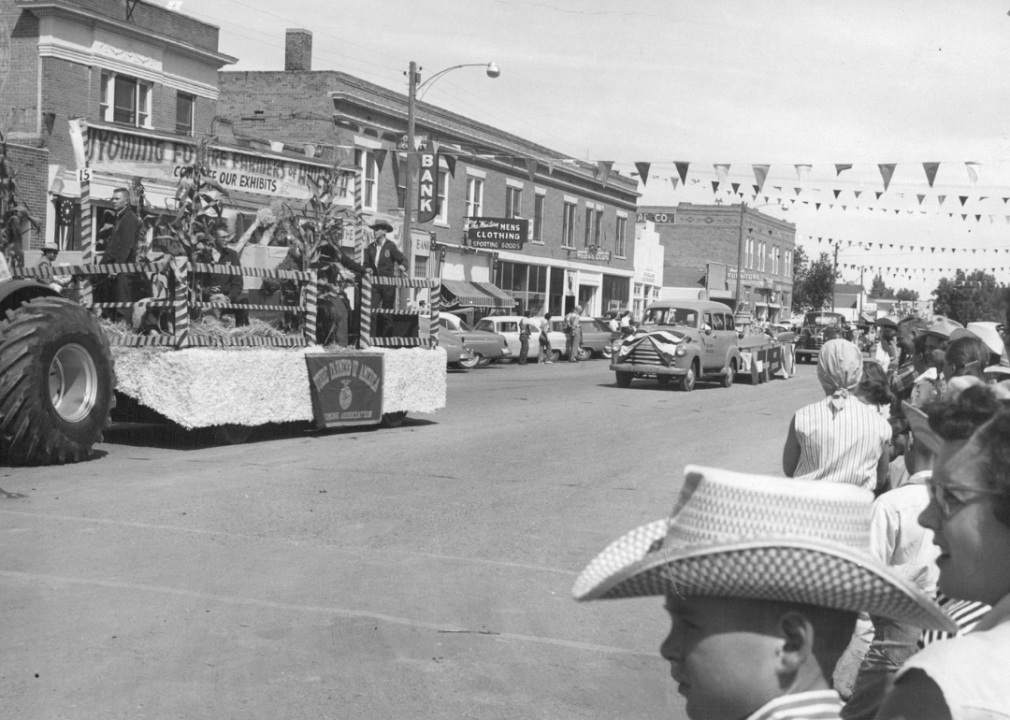
The Denver Post via Getty Images
Wyoming
Wyoming has always used its state fair as a way to bring families and the community together. One way they do this is by kicking off each year’s festivities with a parade that winds through the town of Douglas. Here, crowds line the streets to view the 1957 kick-off parade.
You may also like: What having a baby was like the year you were born


